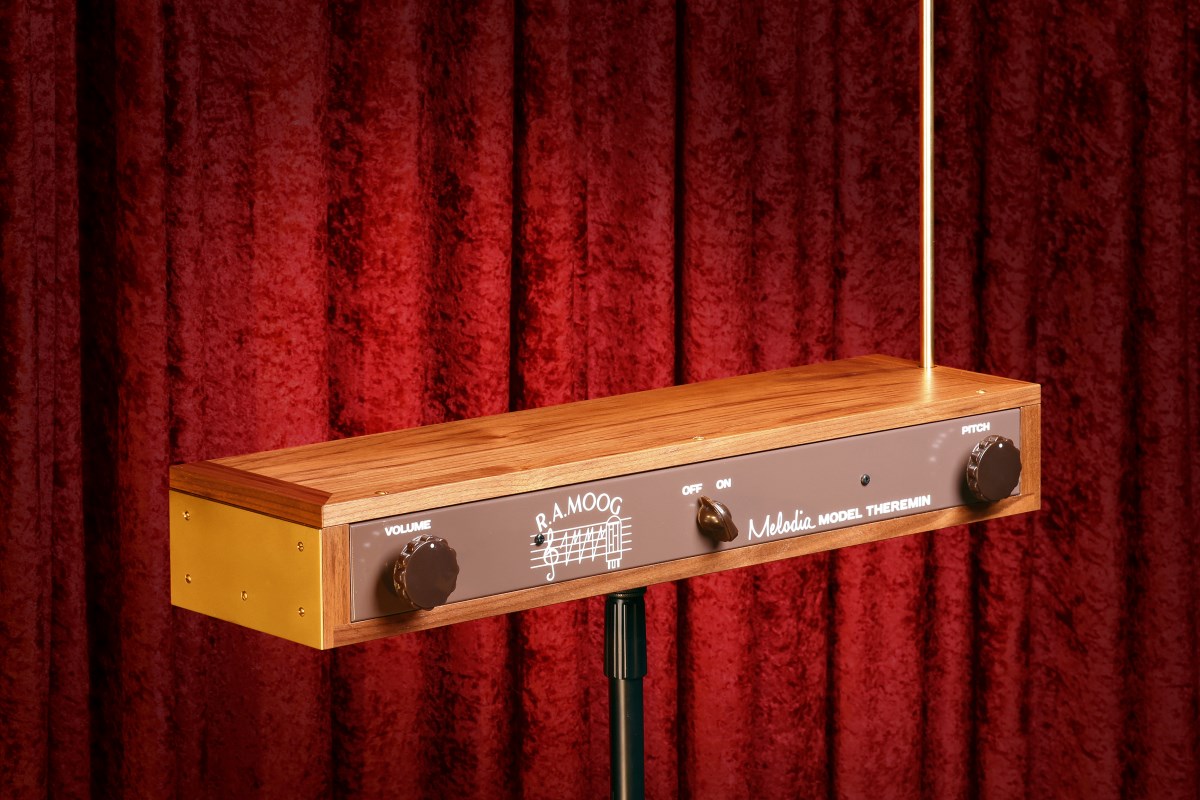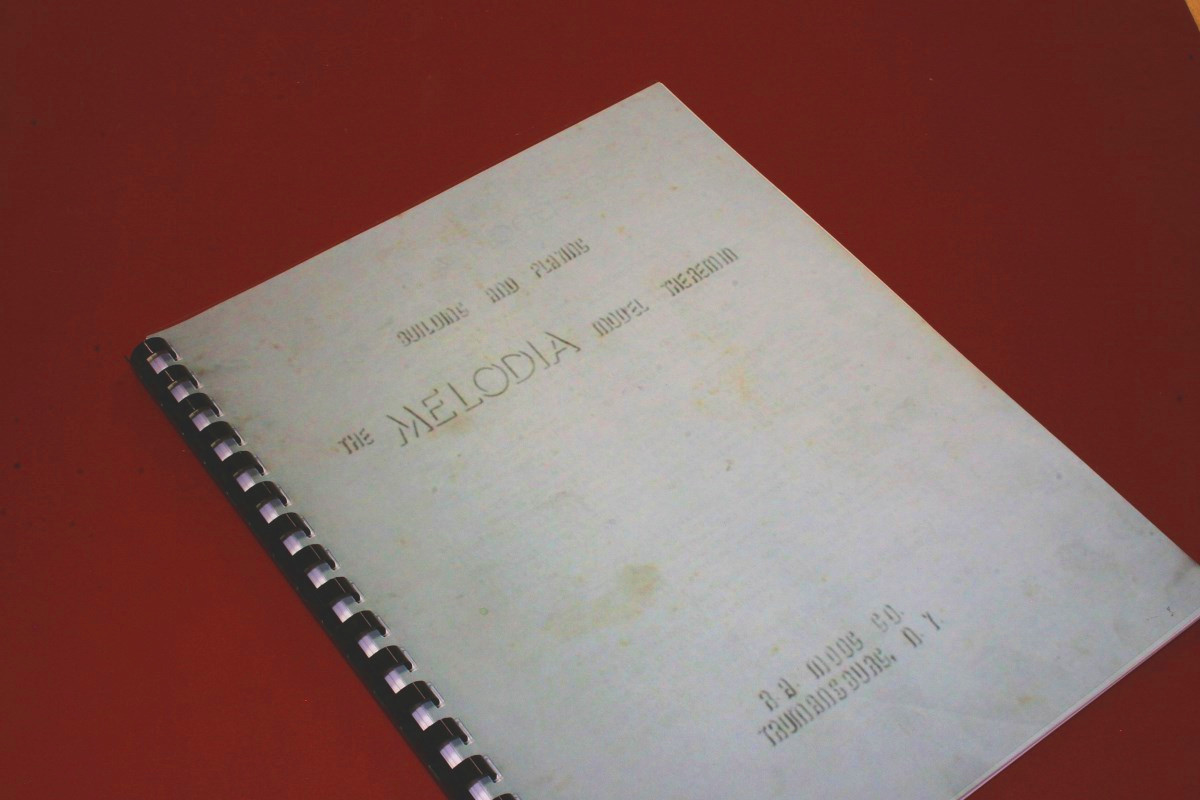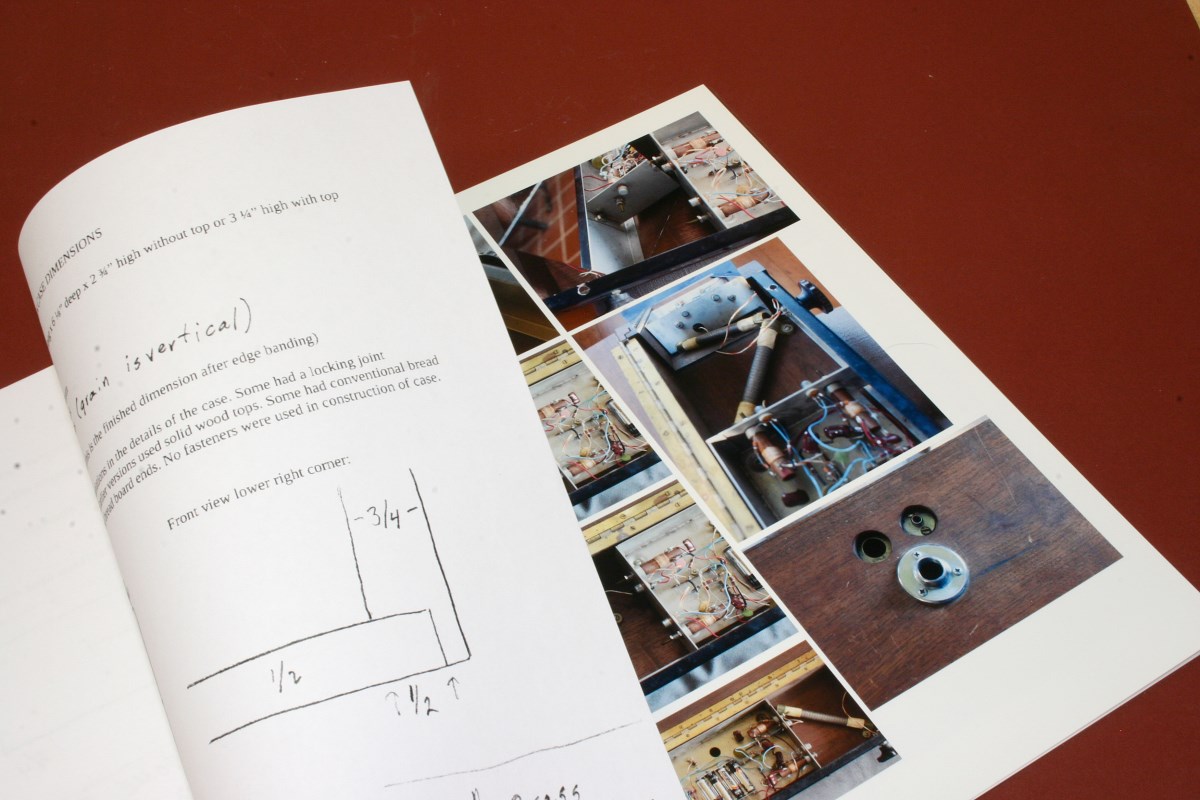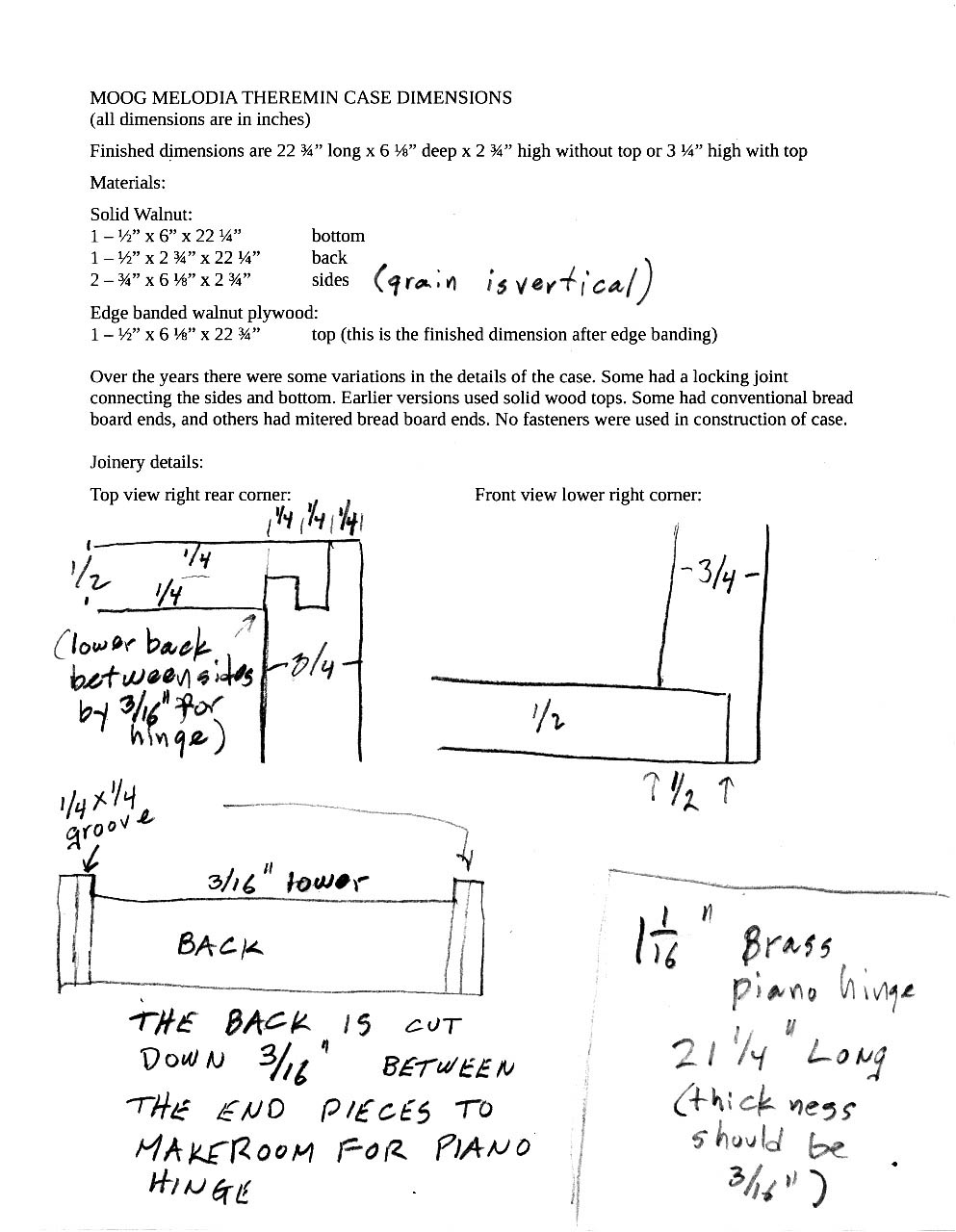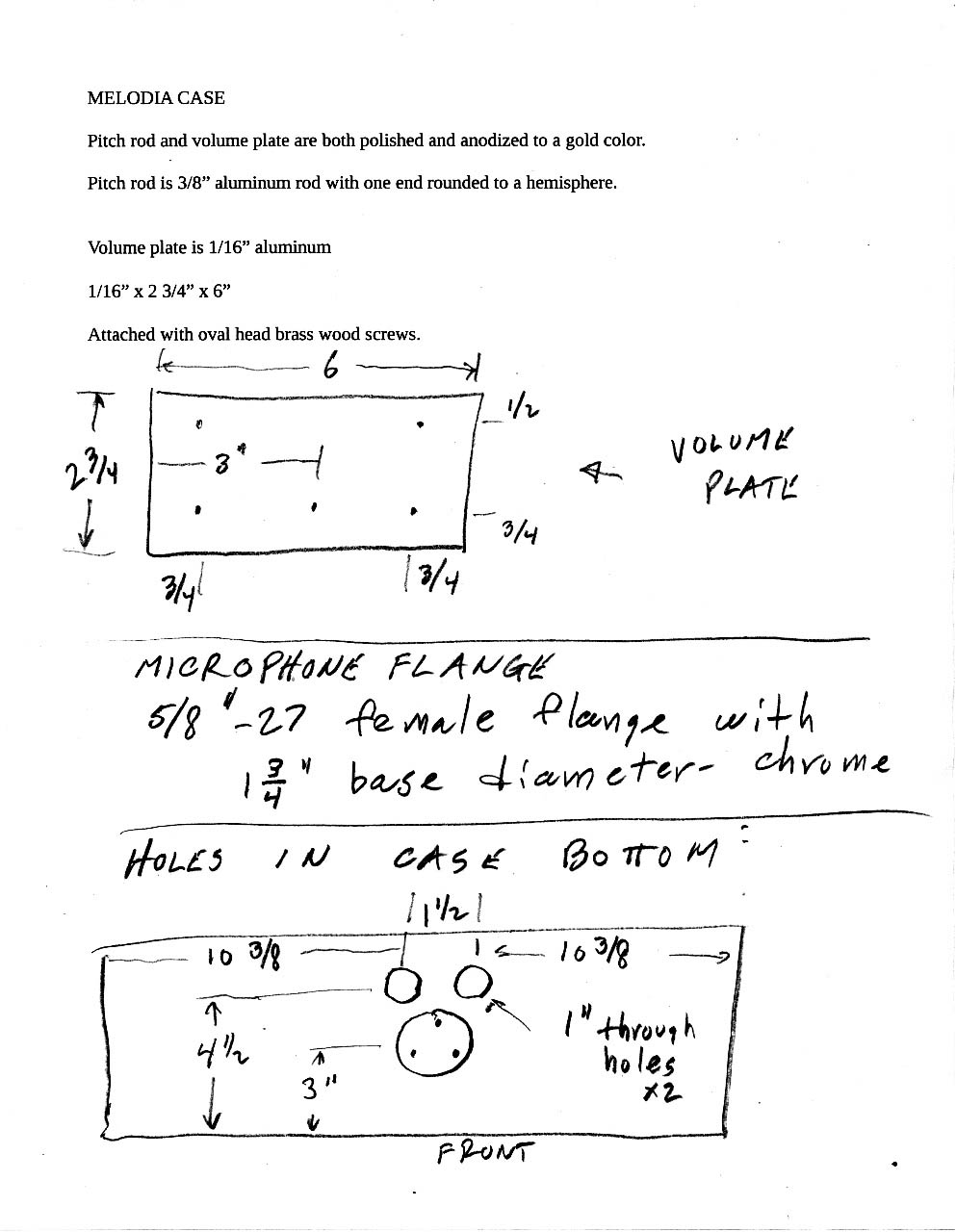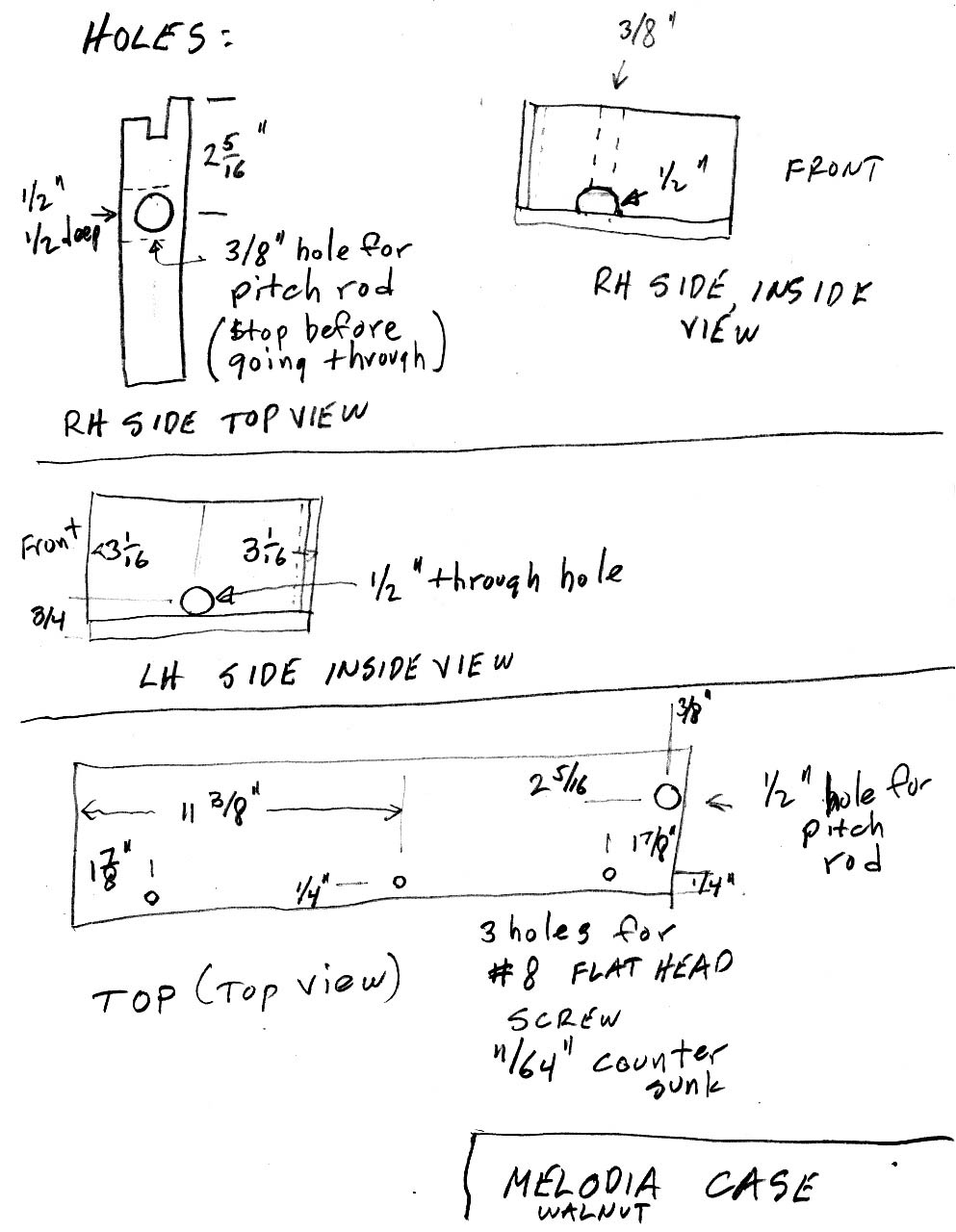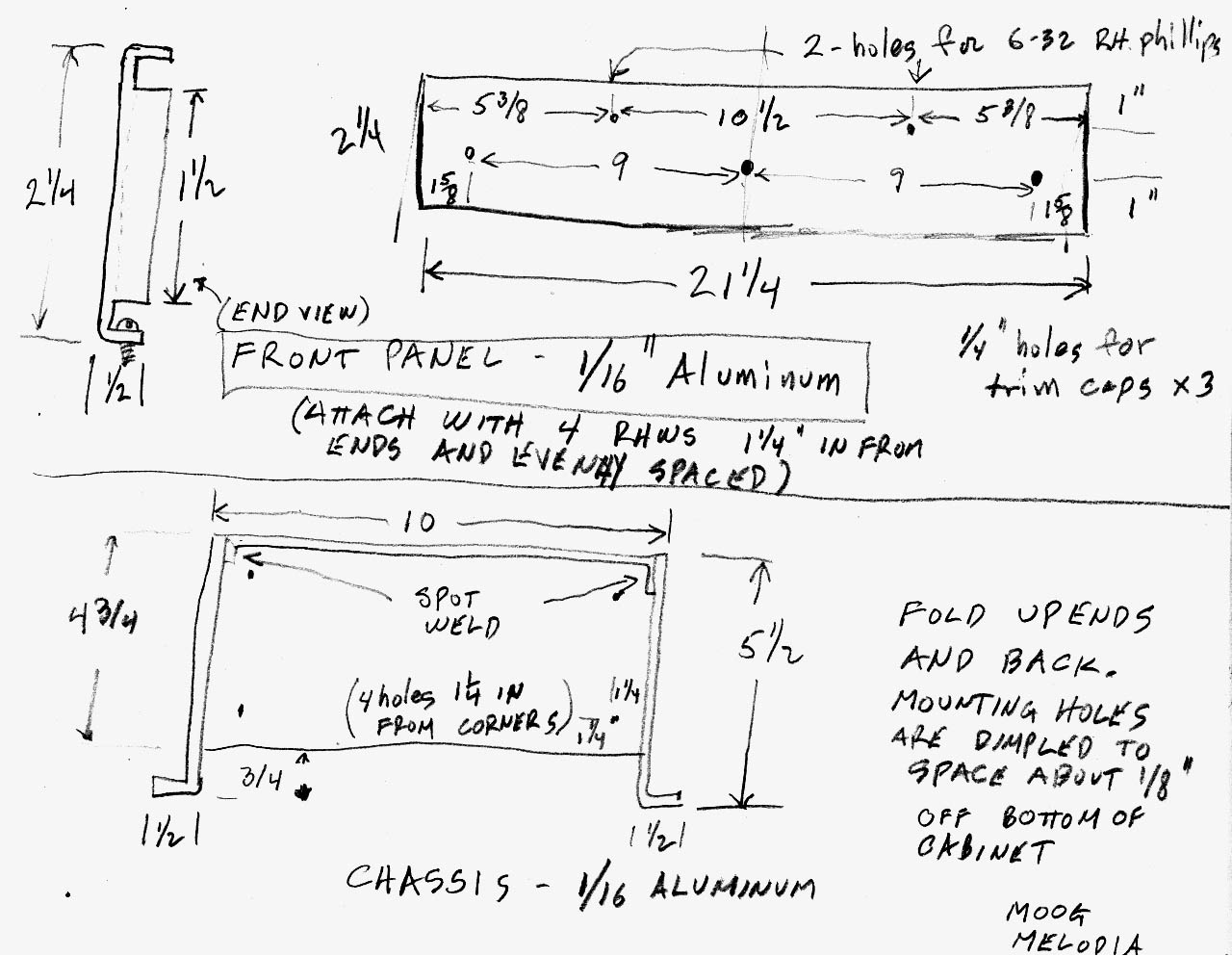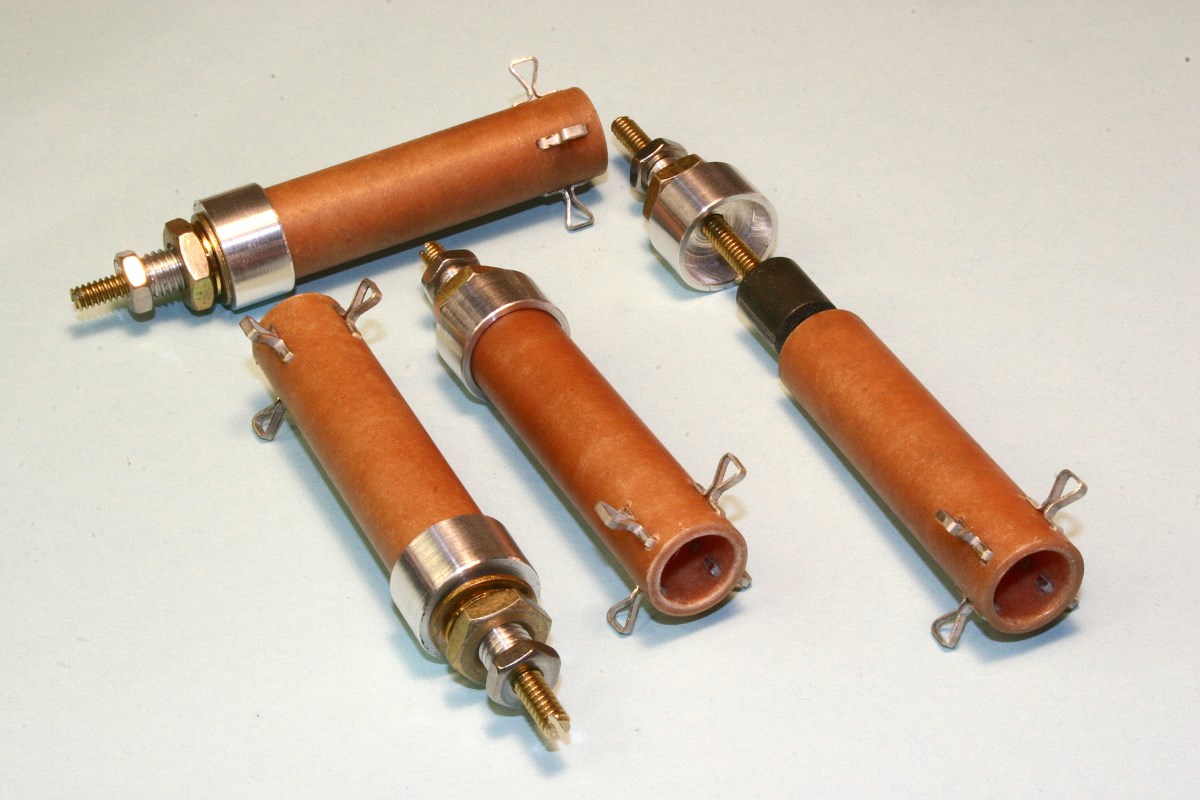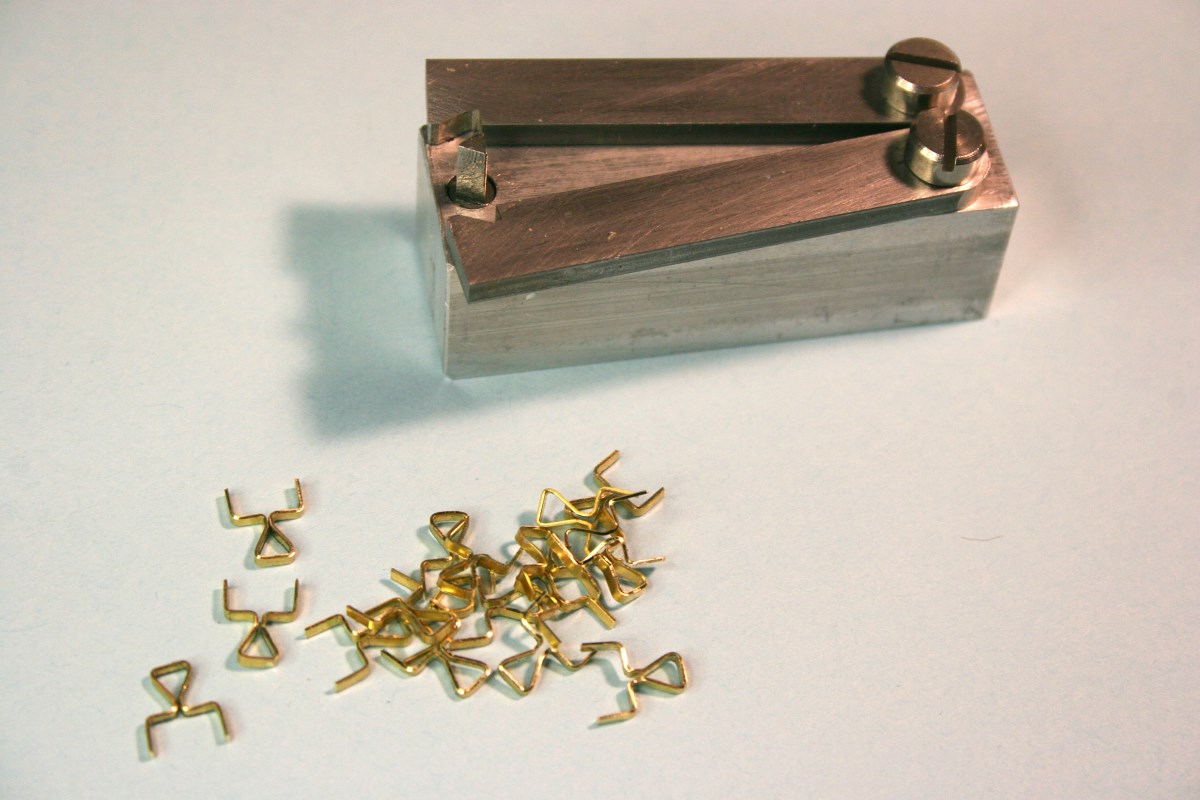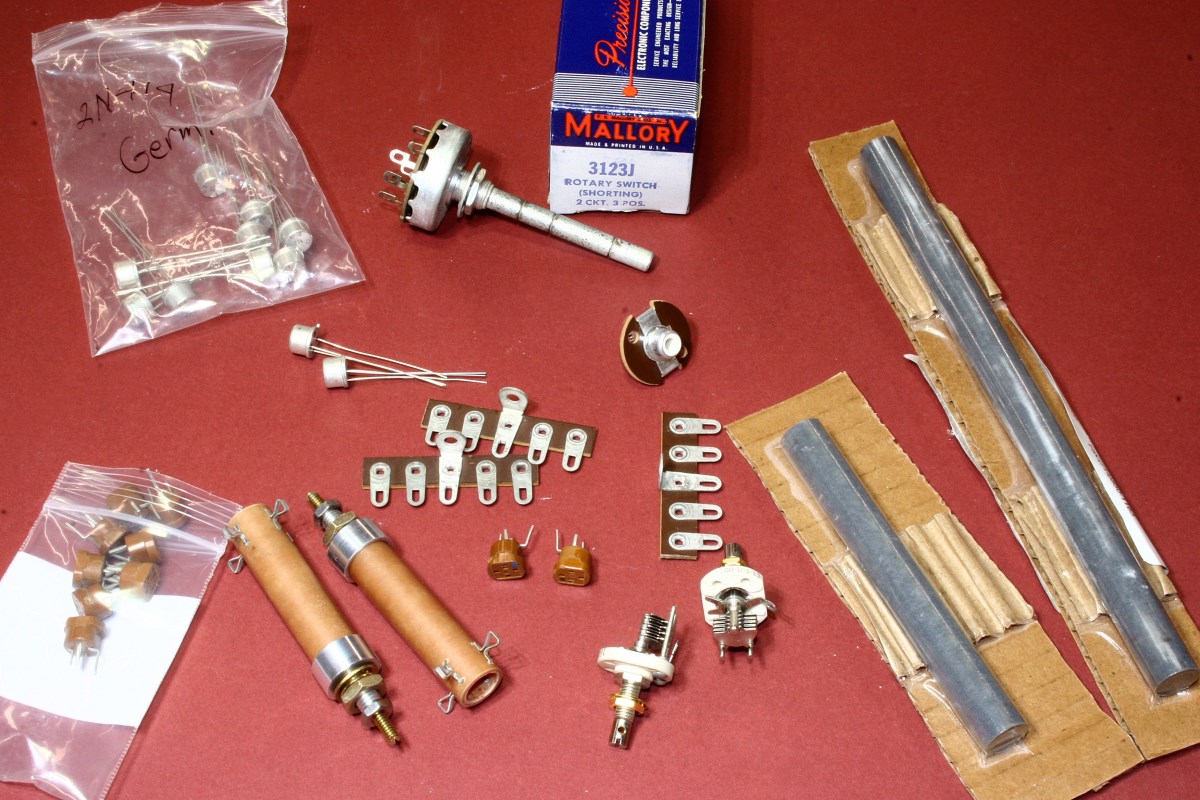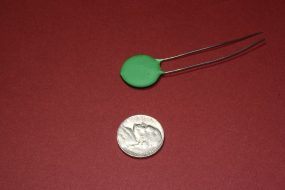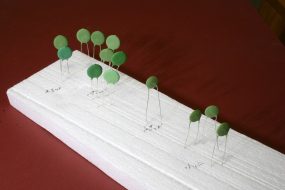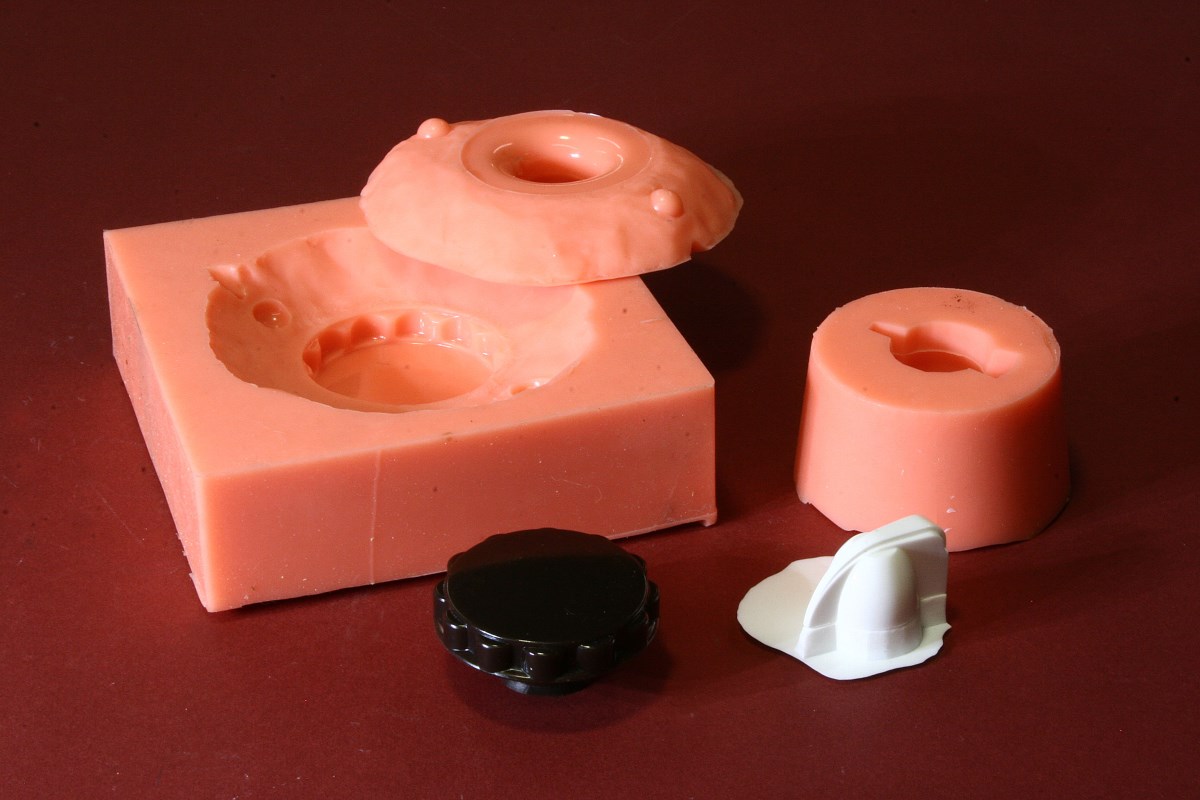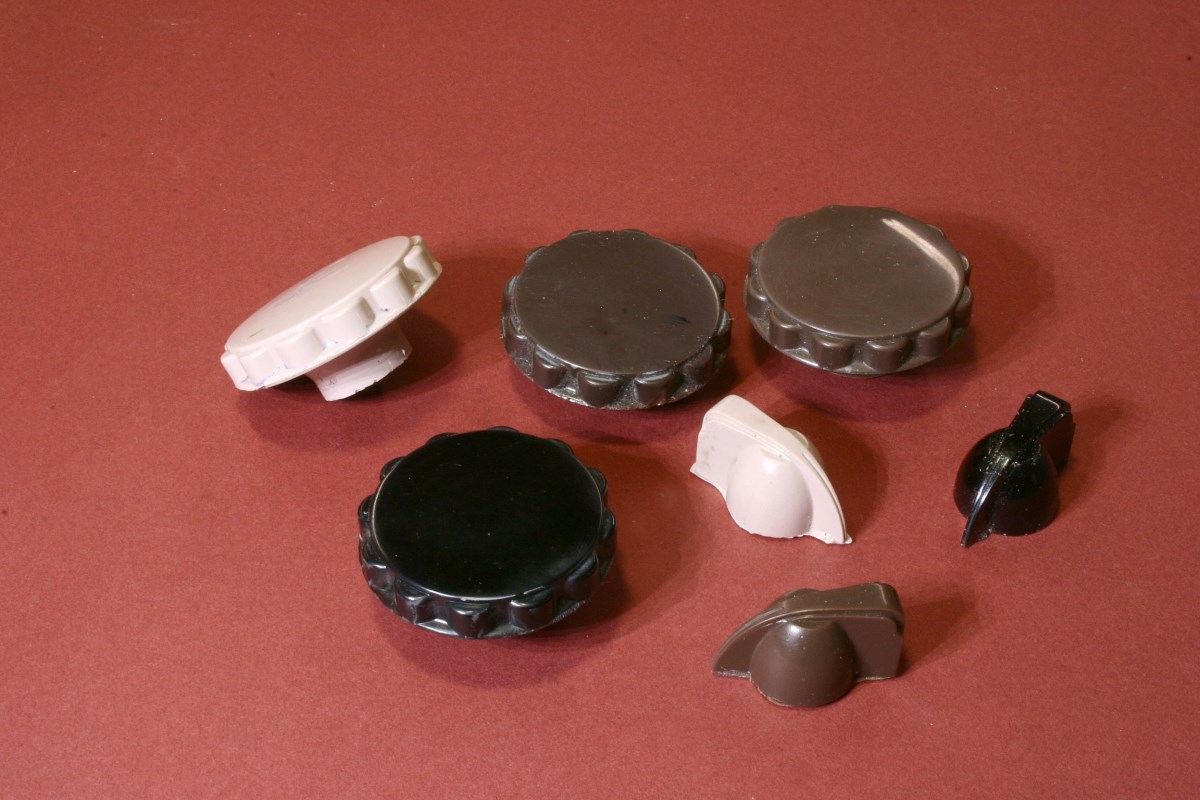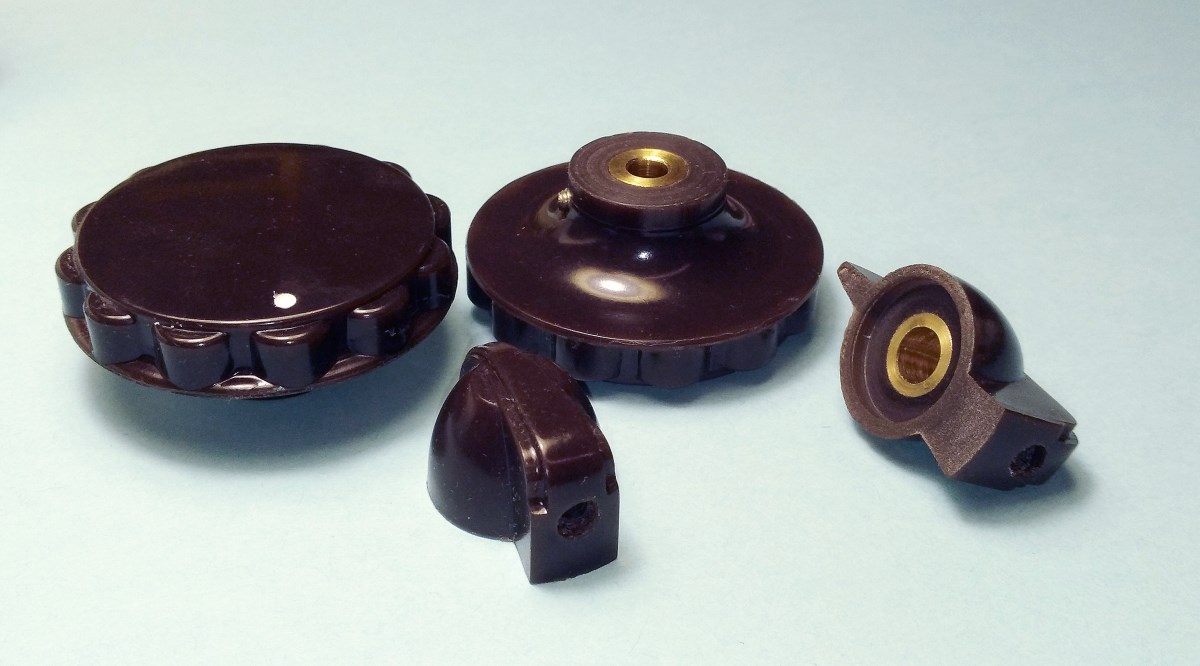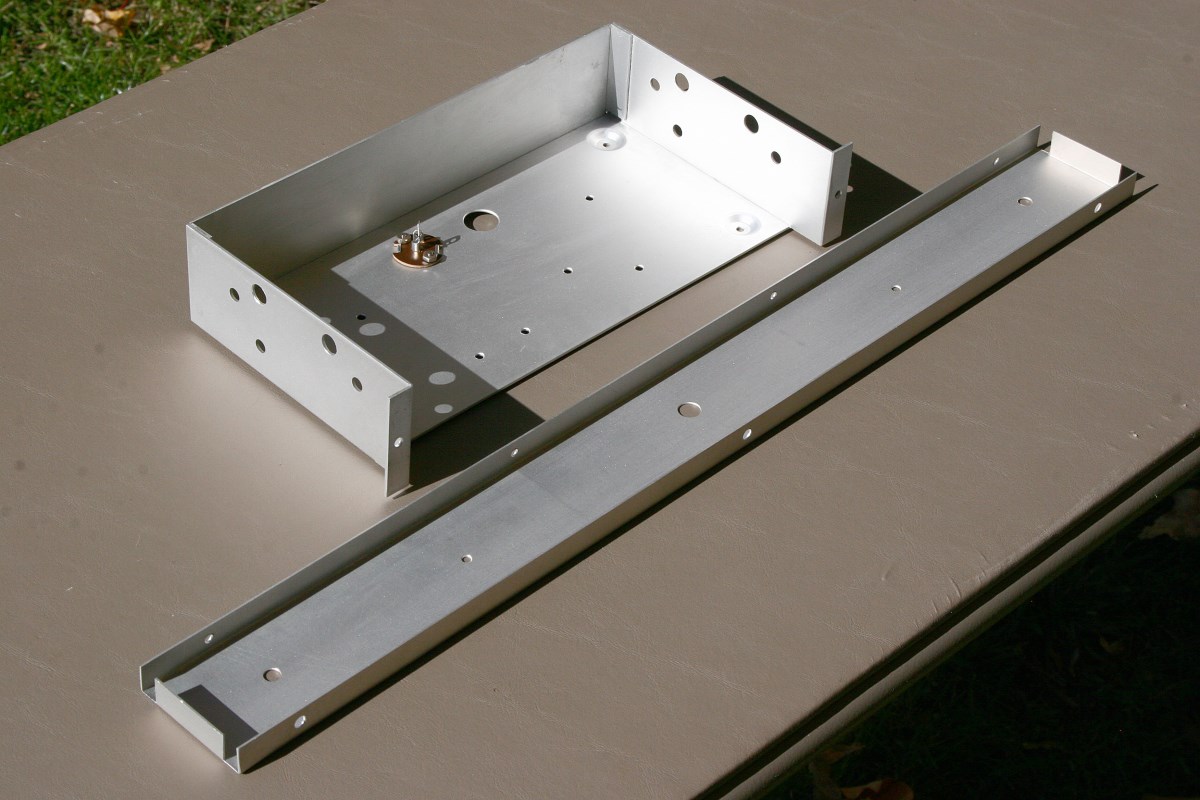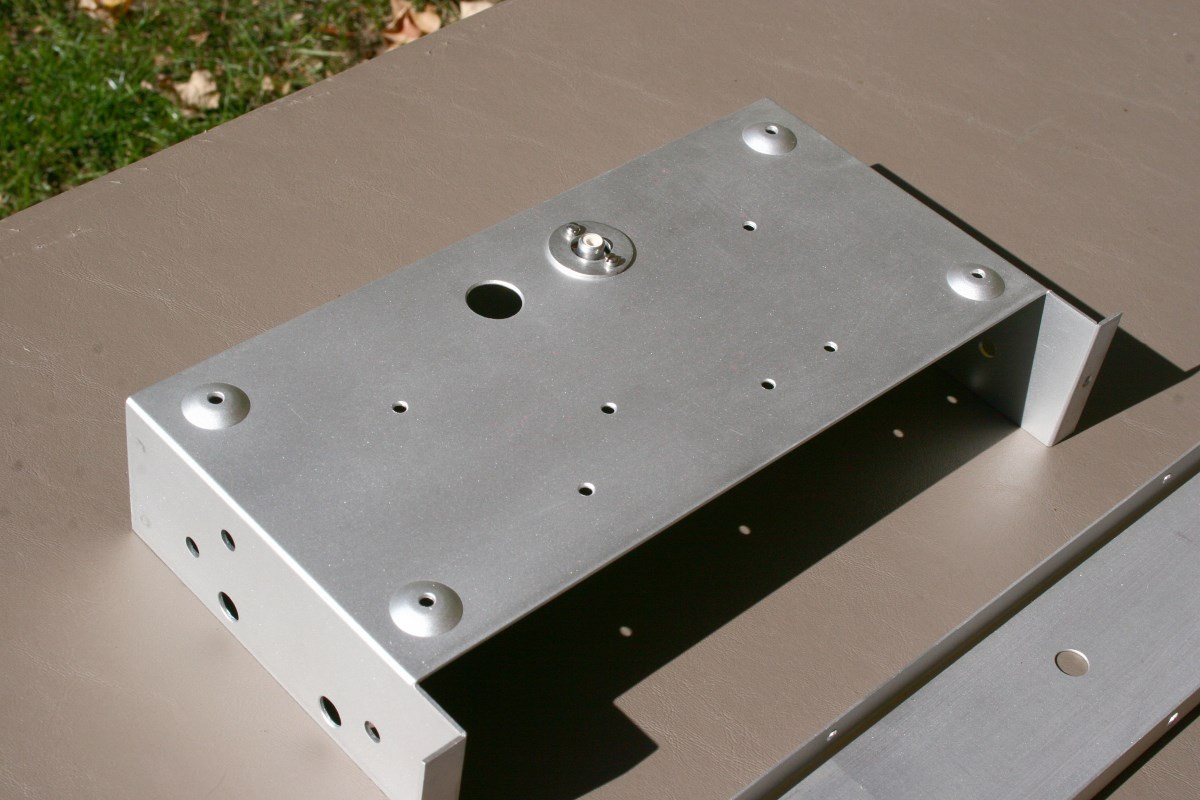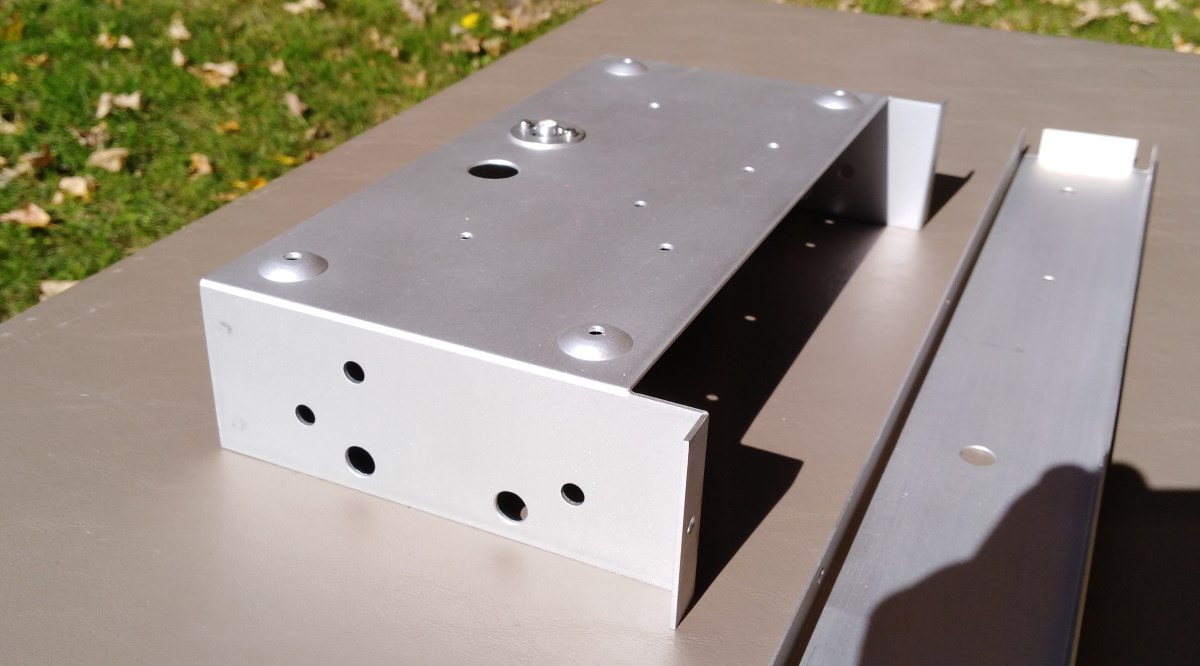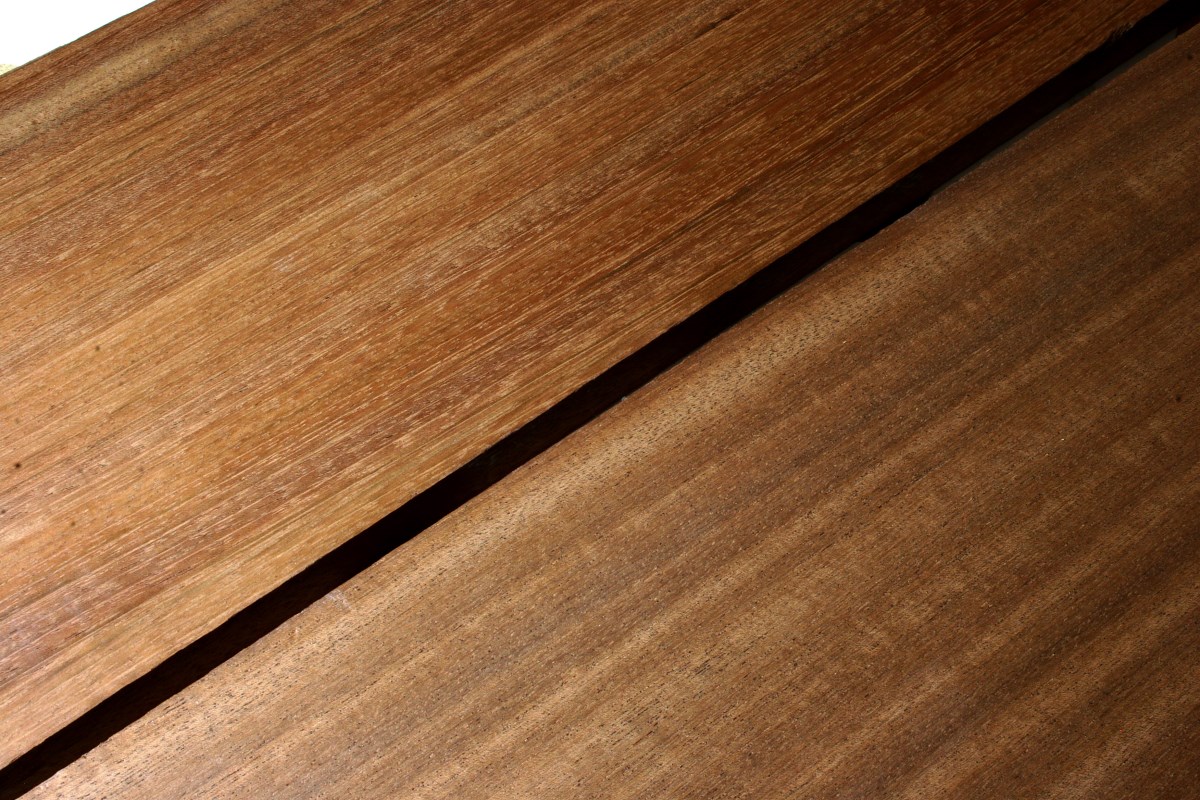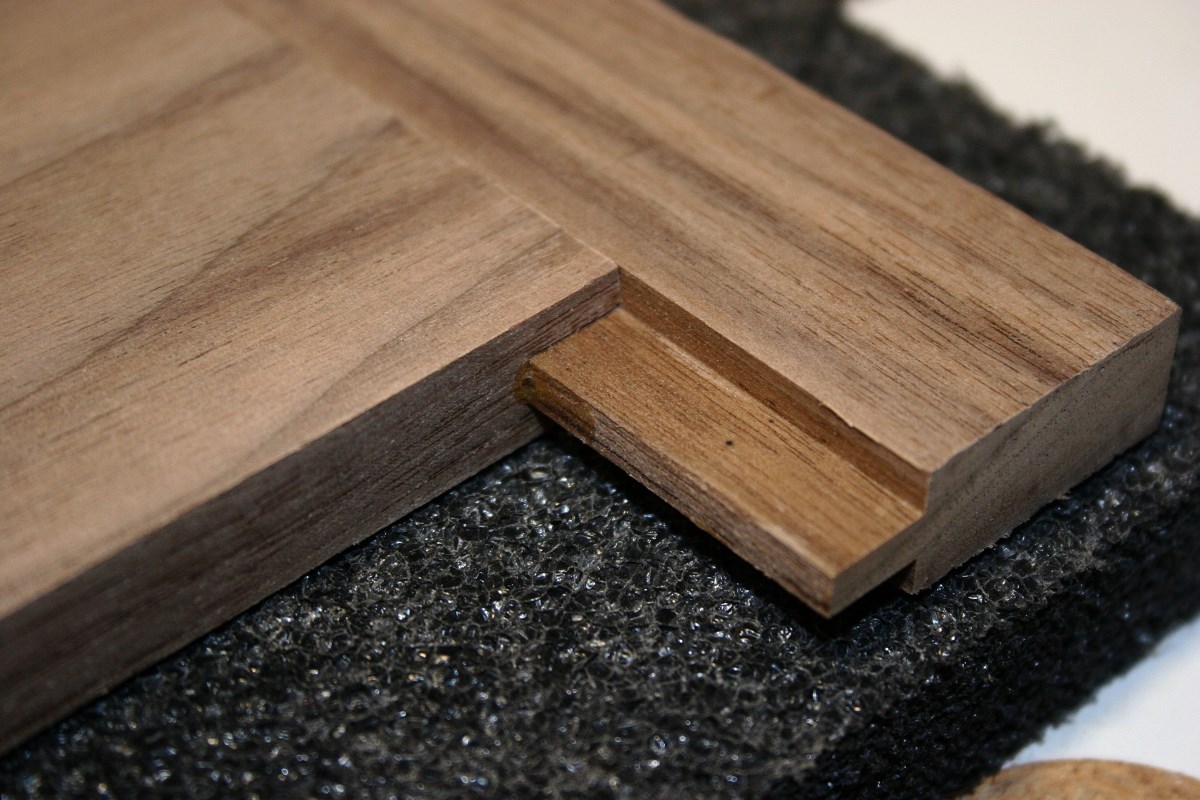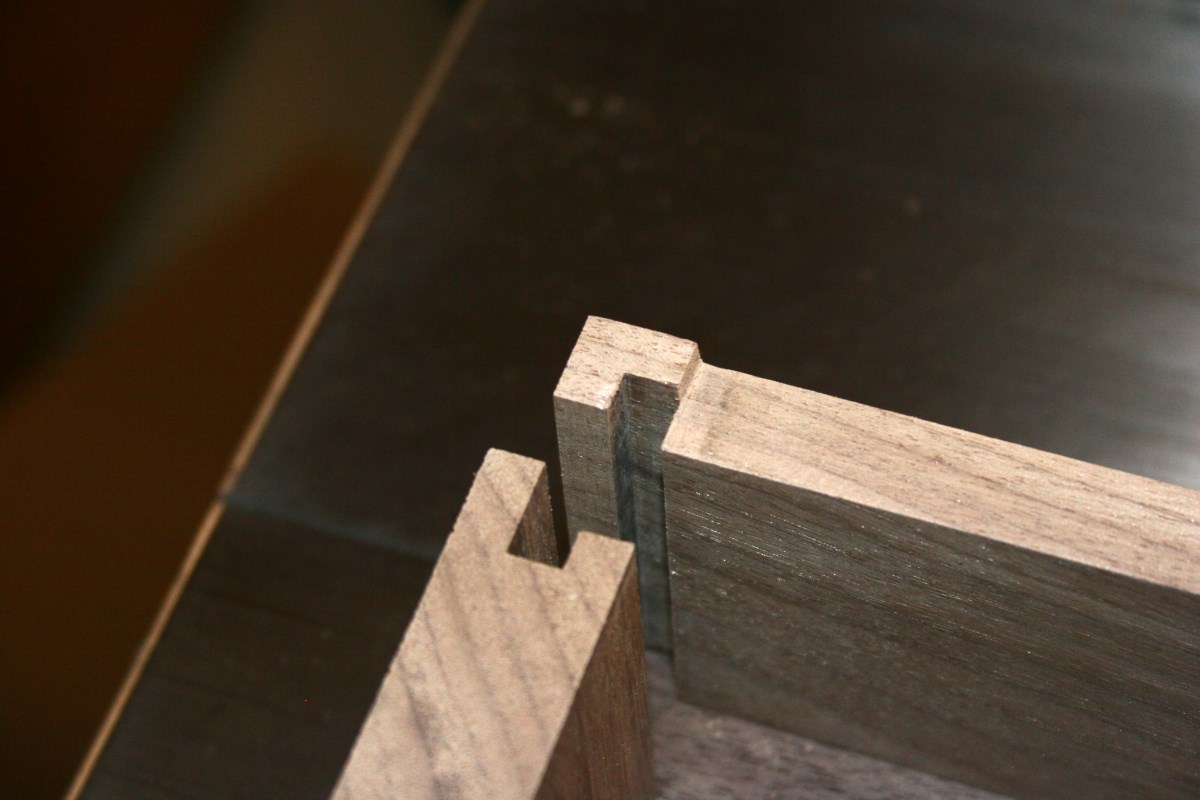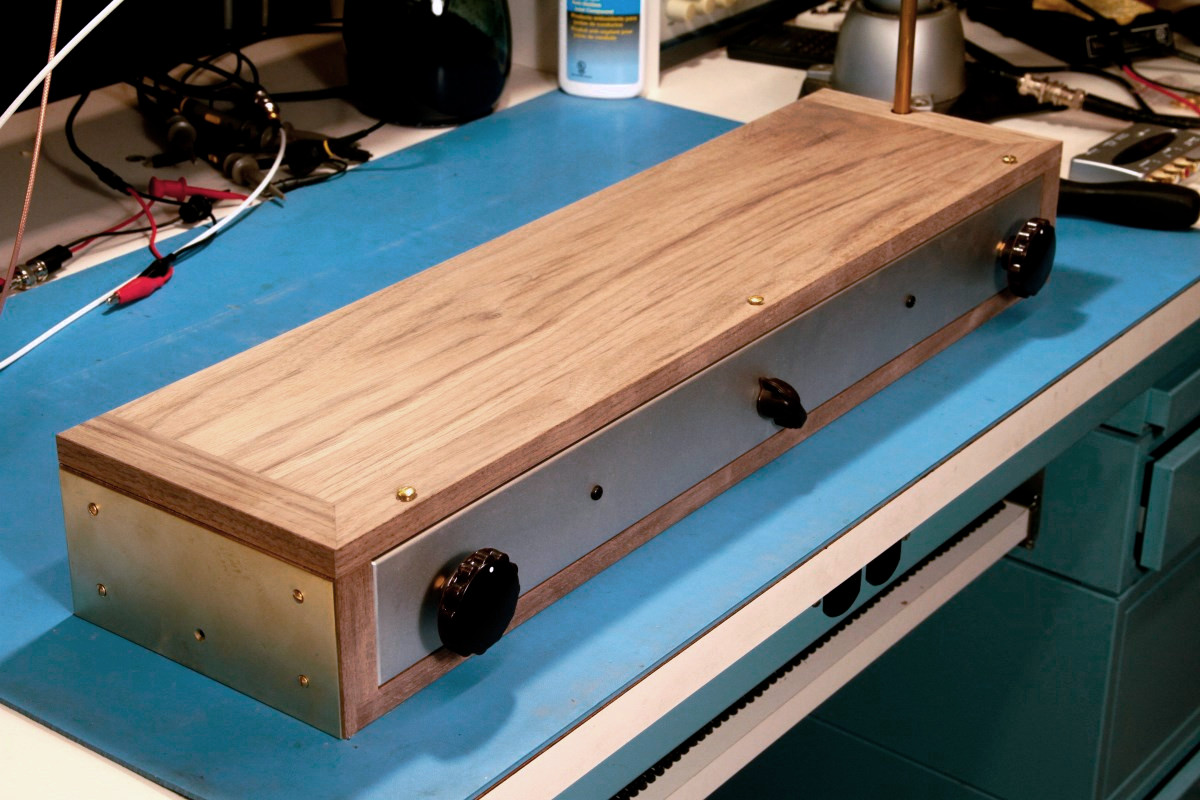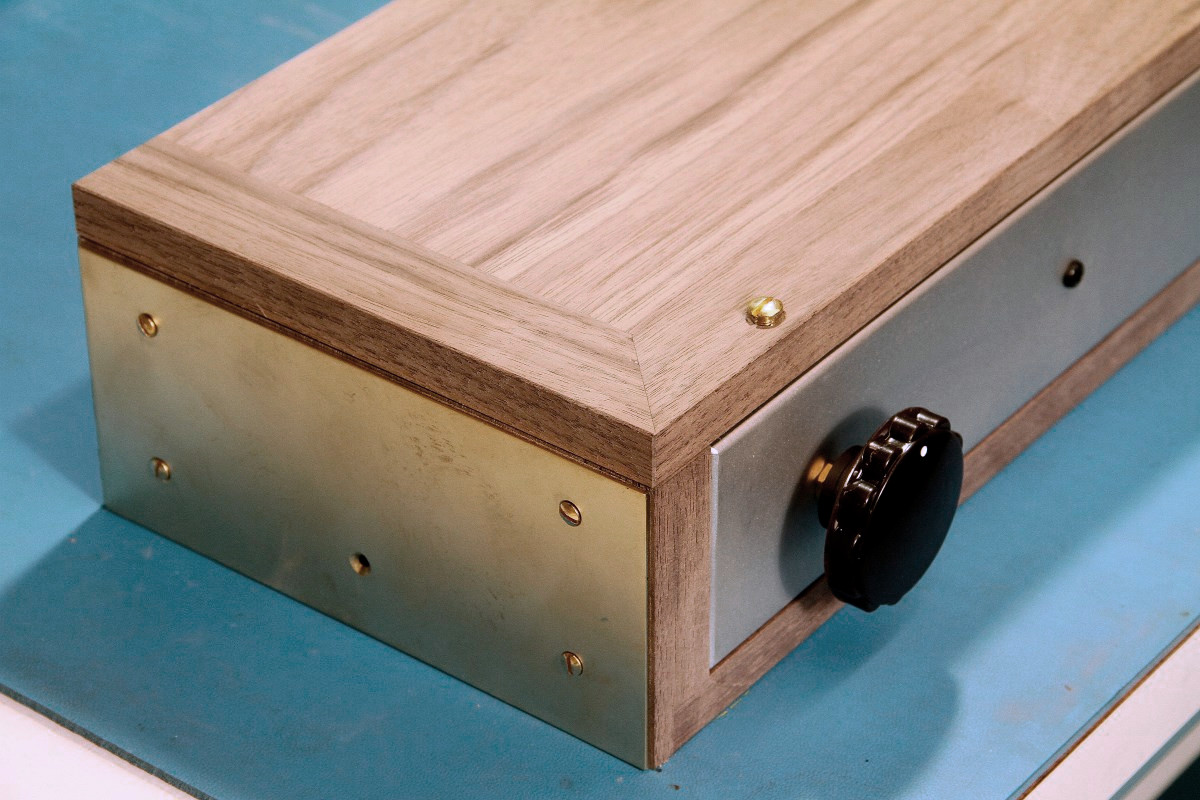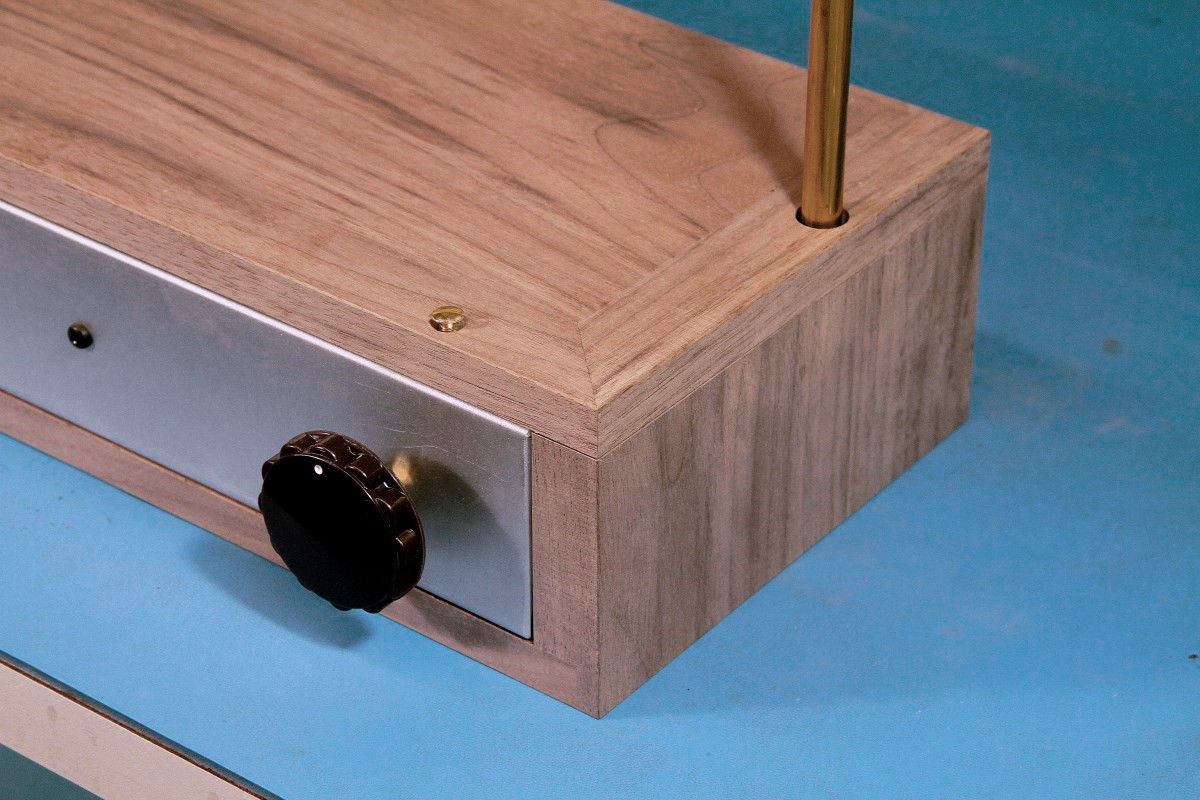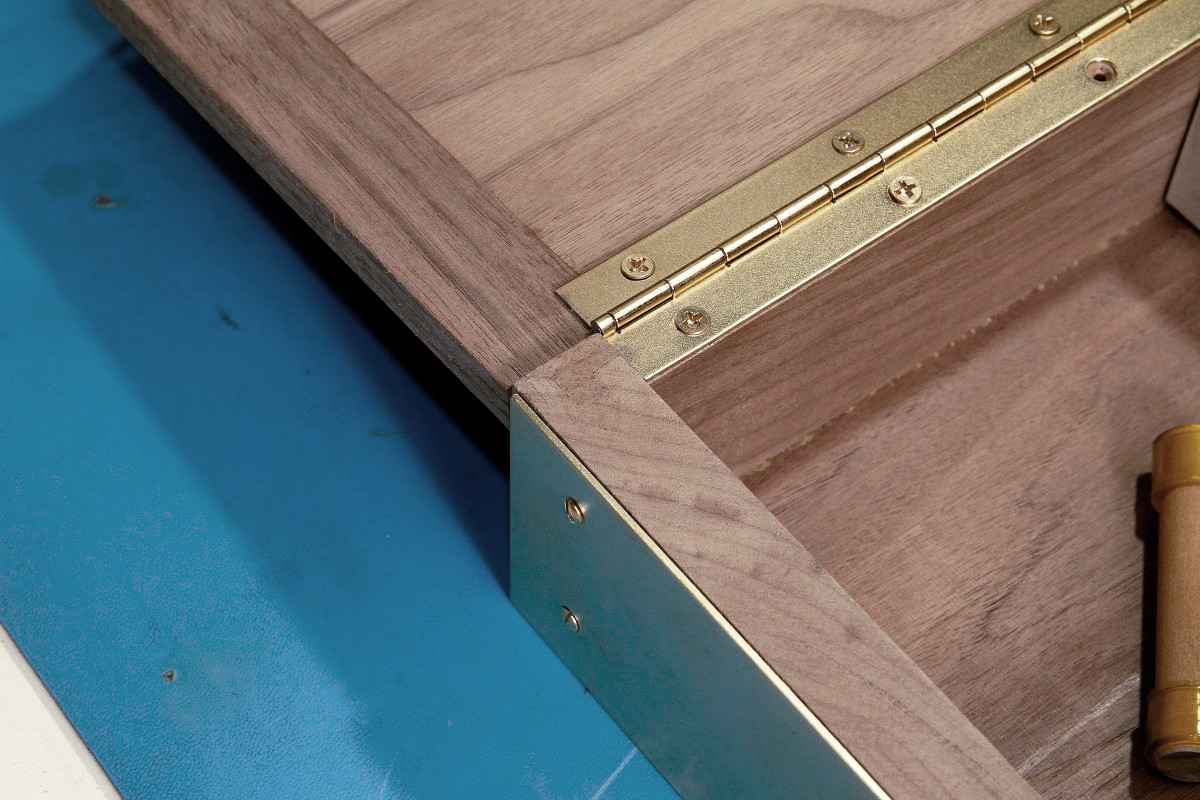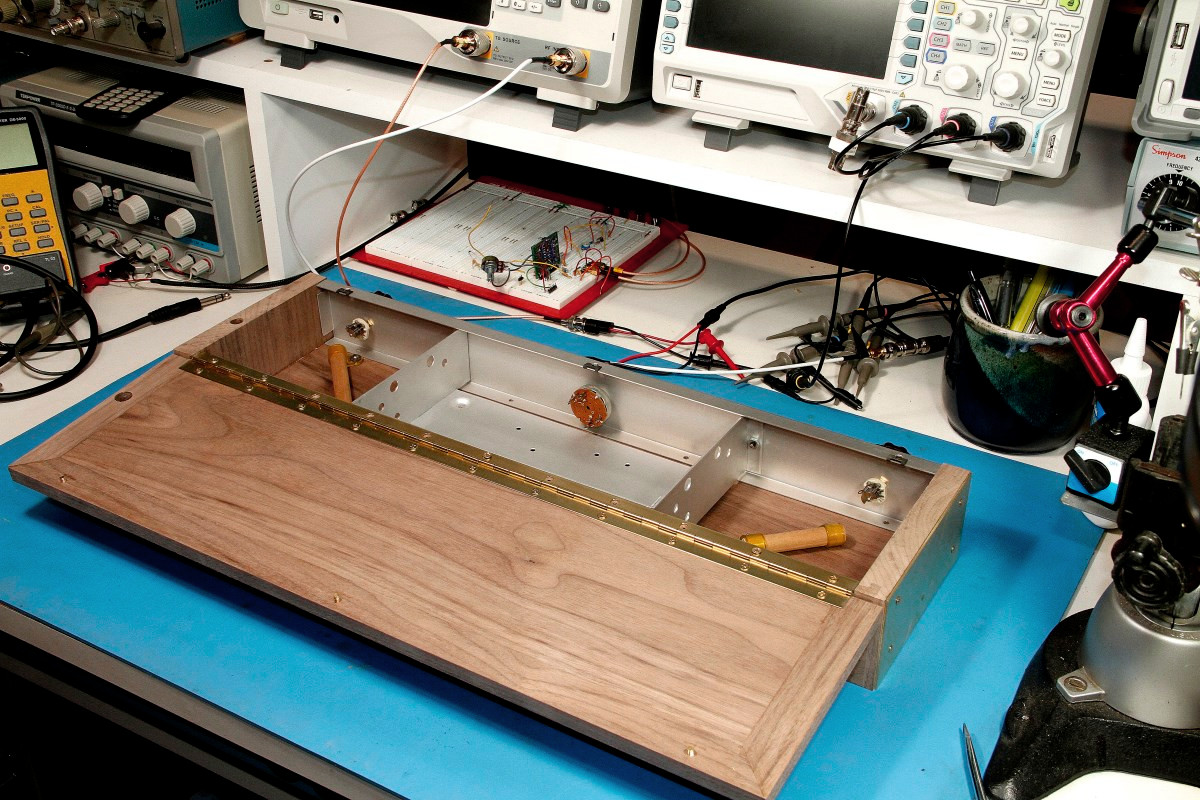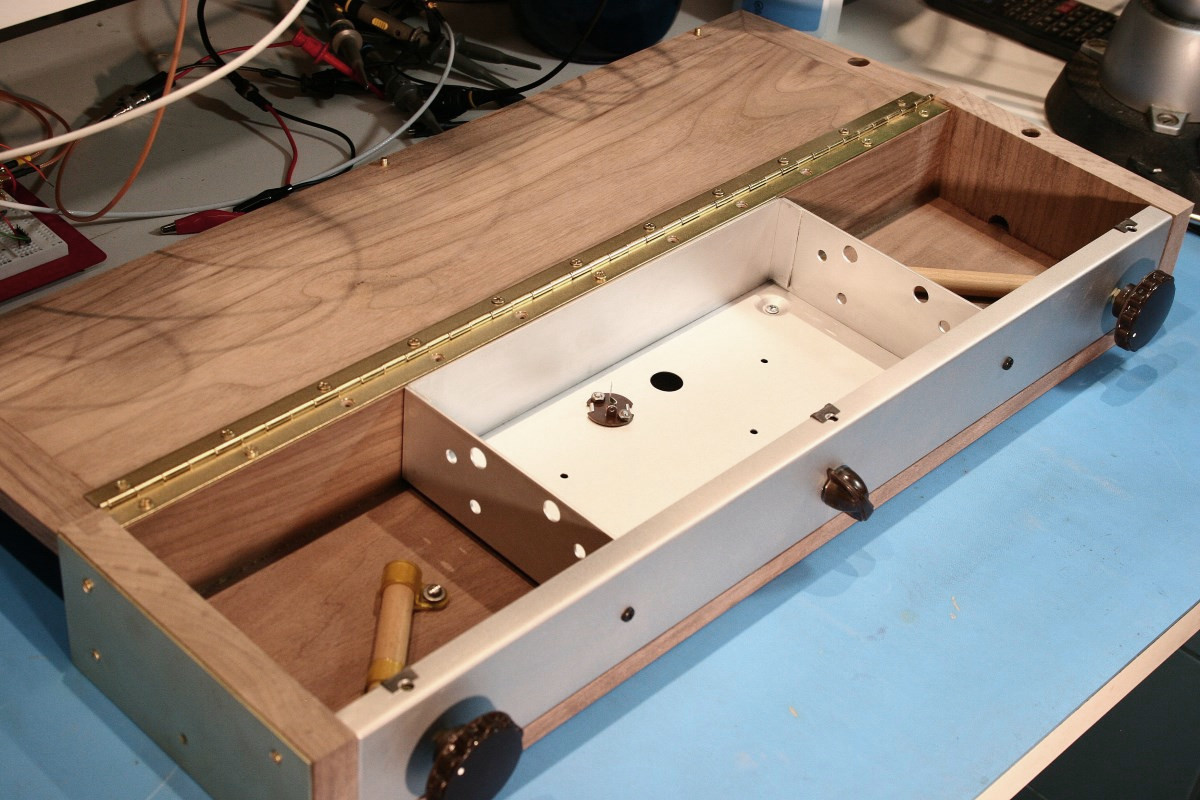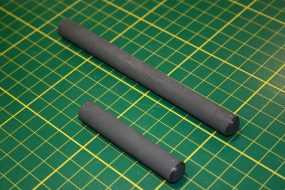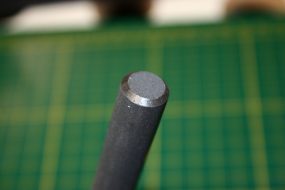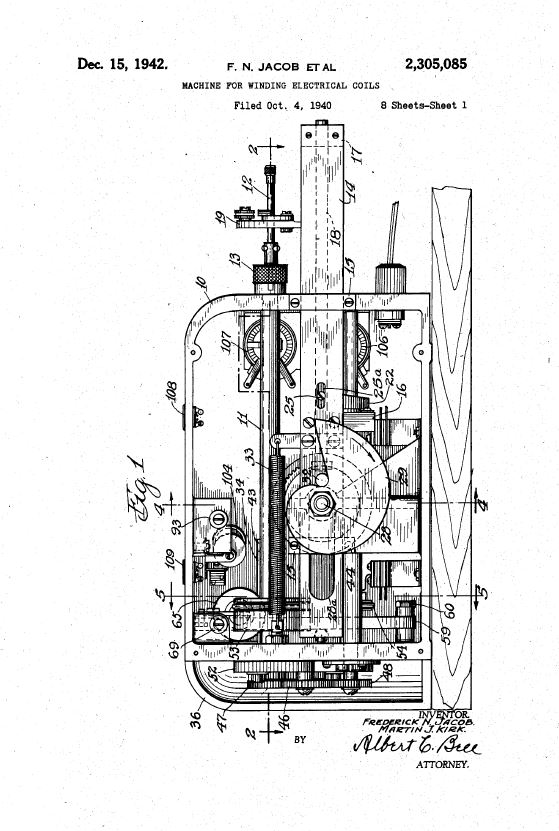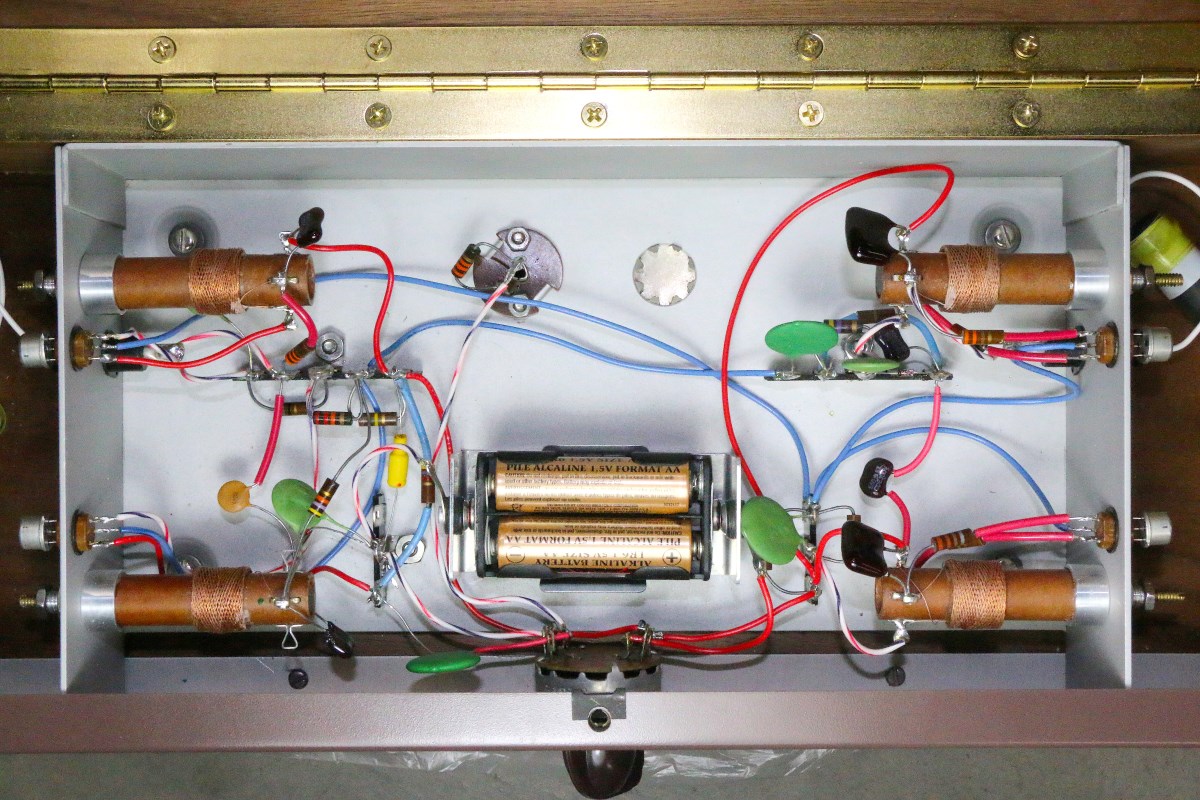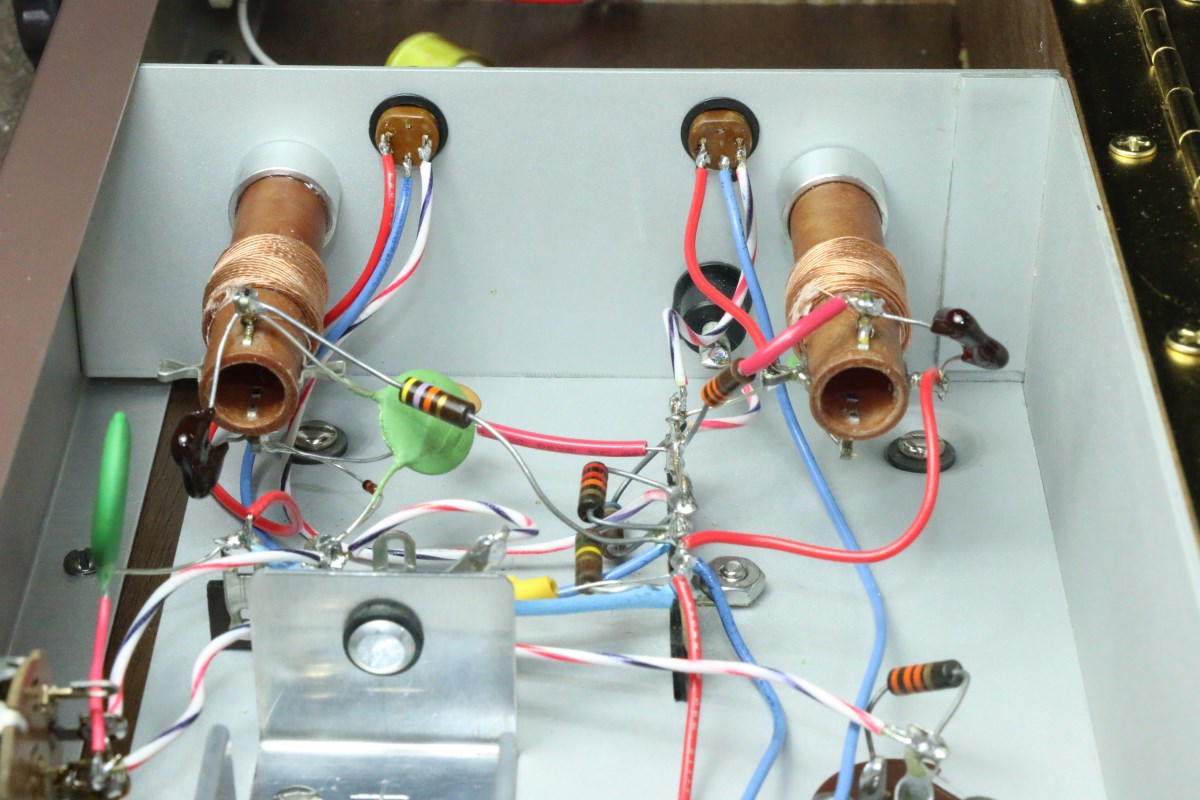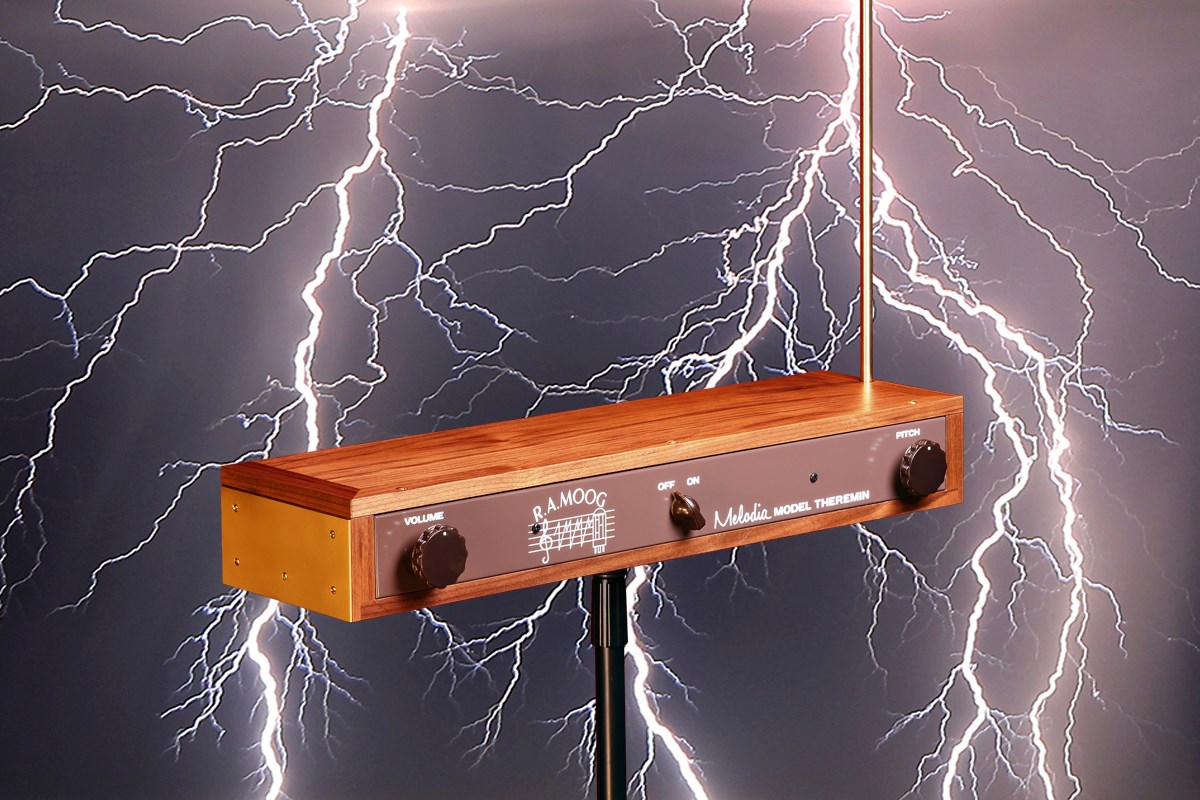Building a Reproduction Moog Melodia Theremin
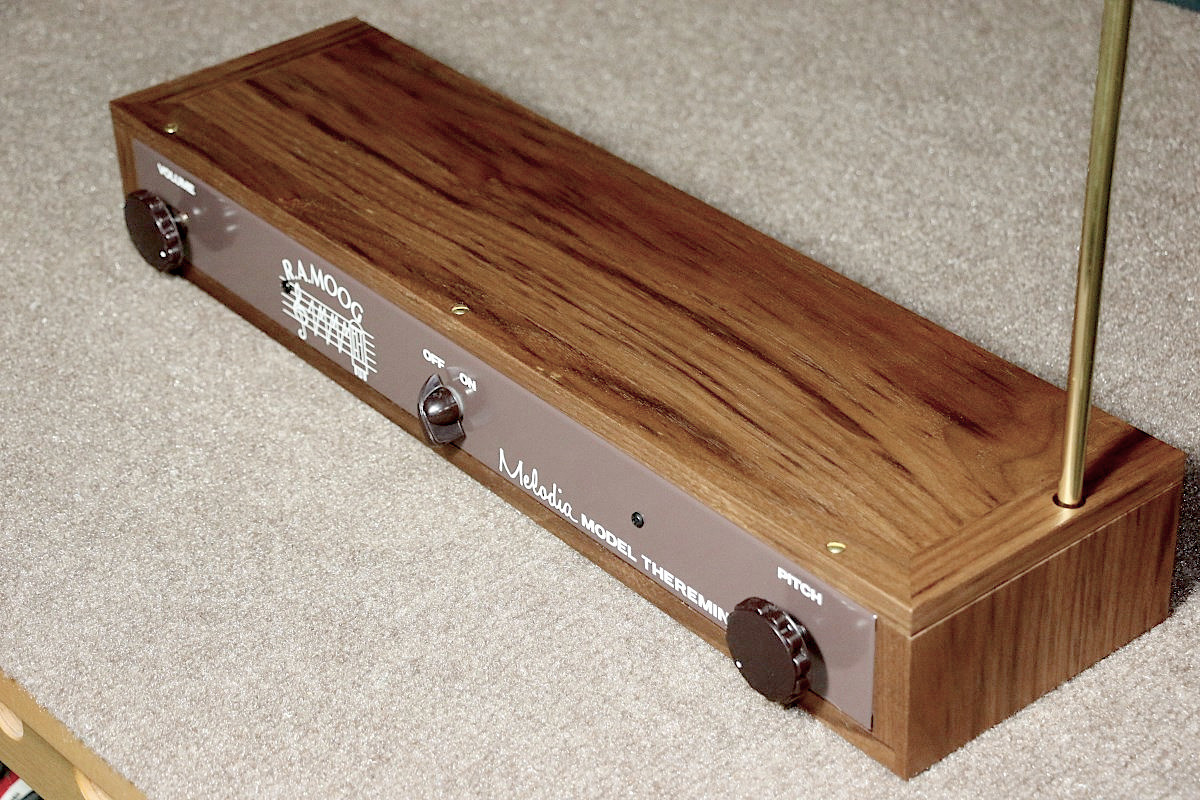
This model lacks the traditional volume loop antenna on the left side, instead using a plate of metal on the end of the cabinet (not visible here).
Why Build a Circa 1965 Theremin?
I don’t know why I became fascinated with the Moog Melodia enough to want to build a reproduction. The physical appearance is very basic, and it has no timbre control, so you’re stuck with a single voice. Part of the motivation for the project is that I enjoy doing restorations and have a great appreciation for the craftsmanship of antique and vintage items. I also enjoy building from scratch, especially if the project has a nice mix of woodwork, metalwork, and electronics. With the Moog Melodia I get all of these. I had no expectation going in that this was going to be a great theremin, but in the end it turned out to be better than expected, and it was fun to try to build something different.
I think the fact that the Melodia is well-documented helped to keep the scope of the project down to something that I was willing to do alongside other projects that are also competing for time. Both the original kit manual and the 1961 Electronics World articles are available (though they are slightly different designs), and there are quite a few photos on the net of various cabinet styles and several good internal construction views. Attempting to accurately replicate something from photographs by scaling in Photoshop is sometimes tedious, and I find that I’m always second-guessing my decisions and interpretations along the way. With the help of some additional detailed information from Theremin World forum member Harry Wilhelm, the resident Melodia expert, I was able to skip the usual guesswork stage of the project and get on with the fabrication.
My plan was to build a reproduction of the model available from Moog in kit or factory-built versions. These were PNP transistor-based, whereas the 1961 magazine article described an NPN version that was essentially the same except for the transistors and the different biasing that they require.
But before committing to this project I needed to know whether I could buy or reproduce some key vintage components. But once I confirmed that I could still acquire original 2N414 PNP germanium transistors and similarly shaped knobs for the front panel, I figured the rest could be faked.
Gathering the Information
The first order of business was to assemble all of the drawings, forum posts, and compilations of key photos that I could find on the internet into a reference manual for use in my workshop. I still prefer paper copies instead of tablets or laptops when I’m working around machines.
Early in this project I had contacted Harry Wilhelm because I was aware that he had an original Melodia and had previously posted some hard-to-find manual pages on Theremin World. I sent him a personal message, he replied, and soon we were emailing back and forth. He graciously took the time to make some detailed sketches of his Melodia cabinet and supply photos of specific details that I couldn’t find online. The following four sketches were drawn by Harry and are published here with his permission (click to enlarge):
Sourcing or Reproducing Vintage Components
Although I was generally aware that most of the obsolete components would be available on eBay or from surplus electronics suppliers, the more worrisome components that needed to be found or made were the tunable inductor coil forms. I believe that I had read a post by forum member Fat Bob that described similar coil forms that were still available from Surplus Sales of Nebraska. They did have the coil forms (actually coils, they already had windings on them that needed to be removed), although they were a slightly different style from those in the production Melodia, and I chose not to buy them. Surplus Sales has an amazing inventory of unique and vintage items that are not available anywhere else, more often than not at amazing (not in a good way) prices.
Coil Forms
I made the coil forms shown below using 1/2″ phenolic tube purchased from McMaster.com. I also made a tool shown in the second photo to help fabricate the triangular solder lugs from .025″ brass, and the threaded caps were machined from aluminum. The ferrites that I chose to put on the threaded rods were something I already had, and this will be an unknown. When I wind the coils, I will be prepared to deviate from the instructions as necessary to work with what I have. I was originally planning to put together a simple mechanical honeycomb-coil winding machine for these inductors, although the progressive-universal wind used on the large antenna ferrites can’t be applied this way, and for a while I considered adapting a CNC-controlled machine to wind both types (I took a different path as described later).
With the coil forms made I started collecting other vintage electronic components that were on the factory kit’s parts list. The unusual 3-position Mallory rotary power switch shorts the audio in the center position to eliminate the thump when powering on or off. It also can be used for a mute function to quiet any unwanted howling if you should need to take your hand away from the volume plate. The oscillators remain active while this switch is in the center position. This vintage switch was and still is available from Surplus Sales of Nebraska.
Variable Capacitors
Other parts were found on eBay, usually at pretty hefty prices. Sharp eyes will note that the variable capacitors are not exactly correct – I couldn’t find the Johnson 5M11 caps that I bought a while back for this project, but I have these that will be essentially the same after I remove some of the breakaway plates.
Disk Capacitors
Even little things like disk capacitors are no longer available in the larger values specified. I had plenty of chip capacitors of the correct values lying around, but how would that look when trying to replicate the appearance both inside and out? My solution to this purely cosmetic problem was to solder leads on the chip caps and pot them in urethane resin. And since they were going to be potted, why not make a mold from a real ceramic capacitor and tint the resin to match the old green ceramic? All that remains is to transfer some text for the capacitor values…
Knobs
I said earlier that I had found the correct knobs for the pitch and volume controls, and the chicken head knob for the power switch is widely available. I bought the large knobs as a vintage lot, only to find out that Davies Plastics still sells exactly the same knob for less than I paid on eBay. But all of these knobs are black, and the originals are brown. Davies will still make knobs of any color but the minimum is something like 1000 or 2500.
I decided to make molds of the originals and recast them in colored urethane resin. I had all the materials on hand, and these would be simple to do. Or so I thought…
Every time, and I mean every time over the years when I have to cast something new I always start out trying to take shortcuts in the process. In this case I tried to make the silicone molds or urethane casts at atmospheric pressure, and this resulted in failures of both and a lot of wasted materials. I got frustrated and started all over – the silicone was vacuum degassed, poured around the part, degassed again, then cured under pressure at 60psi. With a good mold in hand, the tinted urethane resin was mixed, degassed, poured in the mold, degassed again, and then cured under 60psi pressure. Curing time for the urethane part alone is about 4 hours, so this is a multi-day process. But after doing this, the yield was 100%.
The first photo below shows two successful molds with test castings. Fixturing the knobs to machine for brass inserts was another challenge, but I won’t go into that.
Antenna Pin Jacks
I held out to nearly the end of the project looking for some vintage pin jacks and plugs for the antenna connectors. All I ever found on eBay were banana plugs and jacks over a period of more than a year of watching. In the end when everything else was in hand except these parts, I had no choice but to machine some out of Delrin and brass tubing to match a photo that Harry had snapped for me.
Battery Holder
Original Melodias were powered by the long-obsolete Eveready 724 6-volt battery which has in most cases been replaced by alternative battery holders to allow use of standard AA cells. The 724 was a rectangular battery which was actually a box containing a 2×2 group of four 1.5v AA-size cells connected in series and terminated with brass end buttons.
In keeping with the vintage look of the reproduction I fabricated a 724-size battery holder out of aluminum so that a modern plastic 2×2 AA battery holder would fit in it. Next I dismantled two old “D” size alkaline batteries to obtain the formed steel buttons from the positive ends. I soldered the battery pack leads to the inside of the buttons and trimmed the edges of the metal disks to fit the outline of the battery holder. The metal caps were then held to the battery pack with thin double-sided tape.
This arrangement allows simple battery replacement while still allowing the use of the 724 style of battery holder. In the back of my mind I’ve been planning to make a printed slip-cover box with some original Eveready graphics, but I’ve yet to find any suitable pictures to work from. This would be only for show and photos.
Metal Chassis
I formed the metal chassis and front panel from 5052 aluminum in accordance with the sketches provided by Harry and by scaling some dimensions from photos. I made a couple of mistakes, and the pin jack holes are left undersized because I don’t know what I’ll use there.
The 6061-0 metal was so ductile that I thought I would try to make a simple die to form the 1/8″ dimples that the later chassis design had to provide space underneath for protruding hardware. After a few failed attempts on samples, I ended up with a die that worked, and I’m very happy with the results. The second photo shows the formed bumps that act as feet to elevate the chassis high enough to allow space for screw heads that project underneath.
Wood Cabinet
Going by any and all images that I could find on the internet I had initially concluded that the Melodia cabinets were made out of some reddish wood even though walnut was the only material mentioned anywhere. I actually preferred the appearance of the redder cabinets and decided initially to either use some kind of mahogany or if I ended up using walnut it would be finished with a reddish-brown stain. I picked up some naturally red-brown boards from my local hardwood store knowing that if they didn’t get used on this project they would end up on something else.
The wood on the lower right is Sipo, a mahogany substitute that has some nice striping. The wood on the upper left is Brazilian Cherry – very dense and also striped. It’s almost indistinguishable from the Sipo when placed side by side, at least for now.
But in the end I chose to heed some good advice from Harry Wilhelm and make the cabinet out of walnut instead of the other materials that had been considered. Walnut has been very hard to find around here, and the pieces that are available tend to have a lot of “character” – good for certain types of showcase woodworking projects but not so much for a simple functional cabinet. With about 40% scrap, enough good pieces were found for the right look. I would hate to have to source walnut for a large project.
Assembling and Fitting the Cabinet, Chassis, and Front Panel
The cabinet was built in the style and to the dimensions in the sketches shown earlier. One exception is that the top is made in the rarer style with a 1″ mortise and tenon border, mitered at the corners, and the panel is solid instead of walnut plywood. Another exception is that solid brass is used for the antenna rod and plate instead of the brass-anodized aluminum of the original.
The rabbet where the back meets the bottom was intentionally made 1/4″ thick rather than the 1/8″ thickness of the original.
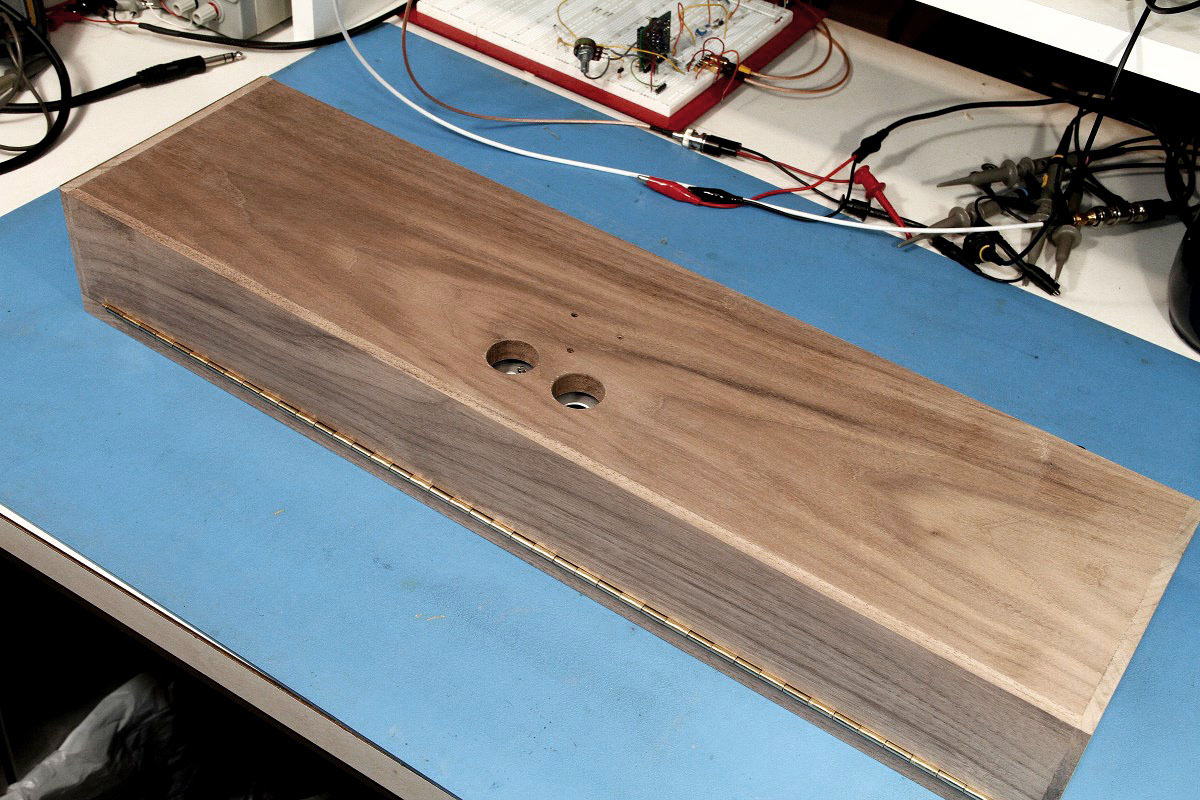
Screen Printing the Front Panel
For this part of the project there was really only one way to make the Melodia look correct. I had to generate the graphics in Photoshop and Illustrator, create a screen from the artwork, and print white ink onto a pre-painted aluminum front panel. All the odds were against me on this; I hadn’t done any screen printing in about 25 years, my rubber squeegees had turned gooey, and of course my photosensitive emulsion and inks were about 24 years past their useful life. On top of that, home screen printing has always had a low yield rate for our projects. We always end up with good quality end products, but a lot goes in the trash too. It’s a lot of work for small quantities, and one panel is really hard to justify. But there aren’t many options that I know of.
Relying heavily on photographs found on the web a fuzzy full-scale view of a front panel was reconstructed from separate images that were pieced together. The poor quality of the image made it unsuitable for direct generation of an artwork transparency, so the entire thing including the vacuum tube and zig-zag line graphic and the stylized script had to be manually redrawn. I was able to find a font that matched the block lettering so at least that didn’t need to be recreated.
Because the length of the panel exceeded the size of my printer I had to create the inkjet transparencies in two parts, cut out the artwork pieces. and tape them into the proper relationship on a larger clear sheet. In a dark room (my furnace room, actually) photo emulsion was applied to a large screen, dried, and the transparency was taped into position. Without a vacuum table to suck the artwork tight against the emulsion a large glass plate was used to hold everything flat against the UV light source. The screen was then exposed.
I had performed a half-hearted exposure calibration prior to this to determine the proper exposure time for the particular new batch of photo emulsion in combination with the inkjet transparencies that I intended to use. The problem with using inkjet prints for any type of exposure work is the limited opacity of the black areas; with the best combination of pigment ink and coated transparency film light can still be seen bleeding through the dark areas. This limited contrast ratio means that UV exposure time has to be a compromise. Exposure needs to be long enough to harden the emulsion under the clear areas so that it won’t soften excessively during the washout process, but the exposure can’t be so long that the emulsion under the black areas gets enough light leakage to harden it so that it can’t be washed out.
It took a few tries to get an exposure that allowed the emulsion to be fully washed out on the fine lines and text without losing some of the background. Once a good screen was obtained it was allowed to dry and as it turned out it was over a month before it was actually used to make a print.
The aluminum panels (there was one spare that was otherwise unusable) were painted brown, dried for a couple weeks, and aligned on the printing board using small wood blocks for proper registration with the screen image. Using some 25 year-old white ink (vintage ink too!) that was determined to still be usable, the screen was flooded and some test prints were made on newsprint paper laid over the metal panel just to perform a last minute check on registration.
Normally when making prints it’s best to have a quantity of extra items to be printed as throwaways to give an opportunity to get up to speed and make sure that the screen is properly registered and that every little corner of the artwork is sufficiently flooded without any thin areas or voids. In this case I had one test panel to print and then I had to move on to real thing, so it had to be right the first time (or more correctly, the second time).
Luck was with me. The first panel print looked perfect, and so did the second which was the one that mattered. There are many things that can and have gone wrong in my limited experience with screen printing, but at this point I was home free as long as the panel didn’t get dropped or smeared while putting it away in a safe place.
Printing the front panel probably represented a bigger mental hurdle on this project than the coil winder would turn out to be, and it was over.
Replicating the Antenna Equalizing Inductors
The originaI 10mH volume and 75mH pitch antenna inductors were progressive-wound coils that were available only from Moog and were not referenced by any manufacturer’s part number. They may have been custom-made for Moog at the time, but in any case I was unable to find anything resembling these unique parts on the surplus market.
In order to attempt to make these myself I bought 1/2″ ferrite cores in 4″ and 8″ lengths. These needed to be cut shorter for the Melodia, and for some reason I thought that the material would be easier to cut than it turned out to be. On some smaller (and cheaper) rods I tried making dry-cuts with several different diamond wheels, but the material would chip terribly. I finally read somewhere that heating would cause fracturing, so I dug out my tile wet-saw. Even bathed in water the rod would randomly decide to fracture and ruin the cut.
I finally made a wood support block with a 1/2″ diameter cove routed into it to fully support the rod right up to the cut line. Even with this the rod would chip around the cut line, but I went ahead and cut the rods close to length and end-ground them to final length. Any remaining chipping was hidden by bevel-polishing the ends. I was happy when that was done; those two ferrites with shipping had cost over $40, and I hadn’t bought any spares.
Little did I know at this time that these ferrites would turn out to be totally unsuitable for the application. More about that later…
Winding the antenna inductors as well as the four tunable coils was going to be the second biggest challenge of the project. The goal here was to not only make a machine capable of replicating the simple “Universal” wind used on the four variable inductors/transformers (as well at those similar to the multi-section coils used in the Etherwave that might get used elsewhere), but also one that was capable of applying the more complex “Progressive-Universal” winding used on the Melodia’s large antenna inductors.
A simple universal-only coil winder would be easy to make in a few hours. Dave Gingery wrote a booklet describing the construction of a winder that was essentially the same as the old Morris Coilmaster winder that was sold in the 1960s.
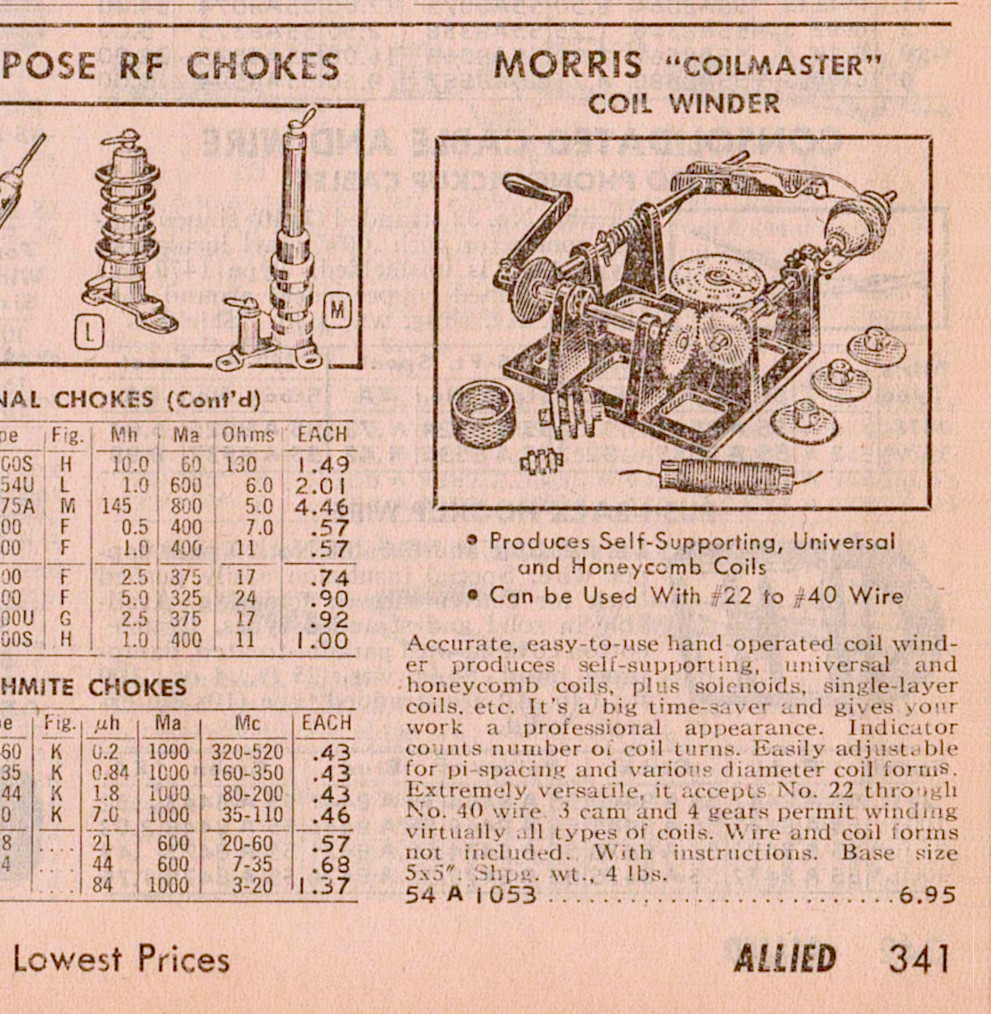
A Dave Gingery Version of the Coilmaster:
The Dave Gingery coil winder works as follows: a core spindle is rotated while a wire guide moves laterally to wind the wire in a helix pattern, thereby minimizing inter-winding capacitance. The lateral movement is not exactly synchronized in a 1:1 ratio to the spindle rotation in order to prevent the wire from winding directly on itself. While the Morris machine uses selectable gearing to lock the spindle rotation to lateral movement, the Gingery adaptation uses a continuously variable rubber-tire/disk transmission that also serves to provide the required right-angle translation without the need for bevel gears.
Both winders have a few points that could be improved upon. It would be slightly better to have the spindle drive (which can slip under wire tension) linked directly to the crank handle, with the variable transmission driving the cam that provides the lateral movement. Secondly, the lateral motion should ideally be linear, provided by a cardioid-shaped cam rather than a circular disk with an offset center. And finally, introducing a pair of linked arms (adjustable) into the fixed linear motion of the cam follower would provide a continuously adjustable lateral movement, allowing coils of different widths to be created without the need for using multiple interchangeable cams.
A Progressive – Universal Coil Winder
A Progressive-Universal winding machine is considerably more complex. In addition to the fast cyclical lateral movement (on the order of the spindle rotation rate) of the wire guide, a slow lateral translation is introduced to shift the spindle continuously as the helical windings accumulate. This results in an inductor that can be thought of as similar to a multi-section pi-wound choke (such as the 3-section coils used in the Etherwave) except that the coil is wound continuously rather than separated into discrete sections. Here is a patent for such a machine (provided to me by a helpful contributor on the EEVBlog forum):
From what I can determine by reading the patent (always a joy…), the large central cam in the above picture is driven by a right-angle worm gear and provides the slow translation of the wire guide support arm. The faster lateral movement to create the helix wind is provided by the wire guide sliding within the support arm at a rate determined by an end-driven cam follower which is geared to the spindle rotation.
All in all this is an interesting but painfully complex machine to reproduce, and one that requires multiple gearing and cam options in order to be versatile.
So what to do?
A simple mechanical helical Universal winding machine is easy to build, although an electronically programmable machine using a microcontroller and stepper motors may be just as easy for some. But the introduction of the need for lateral translation to achieve a progressive-universal wind would seem to make an electronic version the only practical choice.
So the options I am considering are as follows, and unfortunately none of these are quick or easy. I don’t like projects within projects, but from the start of the Melodia effort I was committed to making an effort to reasonably replicate the inductor windings as well, and for that I wasn’t willing to settle for hand-wound coils.
Option 1
I have two metal lathe options – one medium-sized lathe that can provide a lead-screw translation motion geared to the spindle, and a small Taig lathe that can provide a slow open-loop translation that is not tied to the spindle. For either of these lathes I could make a spindle encoder wheel to measure angular spindle rotation, and use a micro to convert this to drive an RC servo to shift a wire guide (for the helix wind), while letting the lathe’s lead-screw provide the translation. I don’t think the translation needs to be locked to the spindle rotation unless you need to be able to stop and back up during the winding process.
Option 2
Make a dedicated dual stepper winder. This would end up looking a little like a lathe (which is why I would like to leverage one that I already have). The spindle however would be driven by one stepper, and the other stepper would drive a lead-screw on a linear table. The lead screw would rotate back and forth quickly for the helical wind but increment the start and stop points to provide slow lateral movement as well. The microcontroller would take care of everything. This is conceptually ideal, but it involves both mechanics and programming, and then you would want a GUI interface, and so on.
Option 3
I have a newly built CNC milling machine that is nearly done except for some unresolved hardware/software bug that prevents completion of the control panel. It has the option of adding a 4th axis for rotation. This setup is tantalizing close to being able to provide x,y,z, and a-axis movement need to wind any coil scheme ever invented (well, maybe not toroids), all under G-code control. But there is some work to be done to get to that point.
Option 4
Wimp out and make the simple mechanical universal winder, and use it to make a multi-section (like 20 sections) pi-wound coil. It would wind coils that look slightly but not altogether different from the originals, and I have little doubt that it would work just fine. Call it a Discrete Progressive Universal Winder.
And the Winner Is…
Jumping ahead more than a year since I mulled the four options above, I went with a fifth option: I designed an all mechanical winder that combined both universal and progressive winding patterns needed for the antenna inductors. The ease of 3D printing the gears and cam that I would need for a mechanical winder made it seem more like fun, mainly because I never really outgrew my Erector set days. I really didn’t know if this would work until it was fully completed, but in the end it did. The story about the coil winder can be found here. It served well for making the Melodia coils so that they would have a nearly original appearance and more importantly they function as they should.
Assembly
The problem of winding the coils had given me a convenient excuse to shelve the Melodia project for over a year, but once the coils were finished and I had all of the other parts on hand there wasn’t any reason to put the project off any longer. I had been looking forward to the assembly. To me this is the fun part, like building a Heathkit
The Melodia is all hand-wired with all of the components mounted in the chassis, on the coils themselves, or on old-fashioned phenolic tie strips. Components that were to be mounted to coils went on first, presumably to avoid the difficulty of working inside the chassis. When the four coils were loaded with parts and hookup wires and mounted in the chassis it really started to remind me of an old Lafayette Radio kit that I built in the sixties, a three-tube super-regenerative shortwave radio that also had coils mounted in the base.
In addition to the fake cast disk capacitors that I had made earlier I wanted to use vintage resistors to maintain the look. Sometimes these would command collector prices on eBay but I managed to luck out and buy a five pound box of tangled resistors, of mostly half- and one-watters. I dumped them all in a plastic tub and for the next couple of weeks while bored or watching TV I would pick through them and roll the leads between boards to straighten them. It sounds a little nuts but I now have a full cabinet of new vintage resistors for when I build that next Melodia (absolutely not!).
Here are some of the pictures of the chassis fully assembled inside the enclosure :
The pitch antenna attachment is ultra-simple: The antenna is simply inserted in a hole in the wood end panel and rests on a screw head. The following picture shows the screw head and the solder lug:
Recently I have been using hollow brass and stainless tubes for pitch antennas instead of solid rods, mainly to reduce the weight. Both ends of the tube are capped or plugged. The top end has a rounded brass plug soldered in place, and with the gravity connection at the base end I chose to cap it with a solid silver disk soldered in place. For stainless antennas (for example on my D-Lev) I haven’t been soldering the plugs but instead they are made to be a press fit. They could just as well be soldered with stainless flux but there really isn’t any need. Here are the ends of the Melodia’s brass antenna tube:
Initial Setup and Tuning
The tune up as detailed in the magazine article went surprisingly well. In the article Bob Moog described a tuning procedure that used on a voltmeter, and even though I had some additional equipment at hand I didn’t really use it. Only the volume side required a little deviation from the procedure in order to maximize the size of the field and give it the feel that I was looking for.
The variable inductor cores that I had to make took a lot of guesswork – I didn’t know anything about the ferrite cores, and the dimensions were estimated by scaling photographs taken from the internet. As it turned out my cores were a little undersized, and I ended up adding some additional ferrite to make up for it (more in the “Modifications” section coming up). But other than this I was very happy and a little stunned that it worked so well. I think the ease of tuning is a tribute to the stability of the design and it has turned out to be predictable to operate as well. Even so, I did want to make some modifications right from the start.
Modifications
Antenna Inductors:
The first and probably the most major modification that I had to make actually prior to the assembly phase was to change to different ferrite cores for the antenna inductors. When I first wound these I was getting atrocious self-resonant frequency (SRF) numbers, and I traced this back to either a high dielectric constant for the ferrite rod material or an unacceptable resistivity. The magnetic permeability of the ferrites and the custom wind provided the correct inductances, but there was simply too much self-capacitance from one end of each inductor to the other, lowering the SRF. Ultimately I had to rewind the progressive coils on plastic tubes and suspend 8mm diameter MnZn ferrites rods within them. To use the screw holes that were already in the cabinet I then made 1/2″ wood dowel ends to stick out of the plastic tube and also suspend the smaller ferrite core within.
This was a little sneaky and visually deceptive, but I cut myself some slack on these inductors because I had absolutely no technical information to work from other than the value of required inductance. And incidentally, wood dowels painted flat black look remarkably similar to ferrite, just in case you are ever trapped on a desert island with only large coils and small ferrites…
Addition of more ferrite core material to the variable inductors/transformer
As mentioned earlier I found during the initial tune up that two of the variable coils were low on inductance even with the adjustable core fully inserted. Rather than rewind or or tear apart the cores I simply cut small slugs from ferrite rods and inserted them into the open end of the coil forms. Having this fixed core also takes some of the burden off the variable core and makes is much less sensitive to adjust. Here is an example of a ferrite slug visible in the end of one of the transformer coils:
Non-linearity at low pitches
The Melodia has the same affliction built into the design that even modern Etherwaves have: there exists too much coupling between the variable and fixed pitch oscillators. This coupling occurs where the sine waves from the two oscillators join at a common point to feed into the diode detector. As long as the two oscillators have a substantial frequency difference resulting in mid-to-high audio notes, they don’t affect one another. But as they get closer to each other when playing bass notes, the coupling tends to cause some waveform distortion (generally considered to improve timbre) while at the same time it creates a tendency for the two oscillator frequencies to go into sync and lock together in frequency, causing a distinct snap to the zero-beat point, almost like two magnets attracting.
This tendency toward lockup makes the bass note spacing compress unnaturally. Some compression of octave spacing at high pitches when playing close to the antenna is common on many theremins, but usually the theremin midrange has pretty consistent octave spacings. Too much oscillator coupling causes low-end octave spacing that is similar to the high end compression, and this compressed-to-normal-to-compressed pitch field can be difficult for the player to live with.
A common aftermarket solution to this problem on the Etherwave theremin is the addition of a small circuit board that inserts a unity gain buffer amplifier stage on each oscillator output to isolate the two oscillators from one another while still allowing their outputs to be combined and sent to the diode detector. This eliminates most of the bass compression because the fixed and variable pitch oscillators are now able to operate near the same frequency without influencing one another.
Addition of this type of buffer circuit to the Melodia would have deviated from the look of the original too much for my taste, so instead I reduced the values of the 3900pF silver-mica coupling capacitors C4 and C5 to 560pF. This seems like a large change; admittedly the choice was based on capacitors that I had on hand rather than by selecting what would seem to be a logically smaller value. Nevertheless this seemed to reduce the bass pitch-field compression a great deal, although the audio amplitude was of course reduced. R5 was then reduced by trial and error to increase an audio line level up to a standard +4dBu signal with the theremin at full volume.
This modification is a double-edged sword. It greatly improves the low-pitch linearity, but it takes away much of the harmonic content of the bass notes, resulting in a much smoother (too smooth to my ear), more sine-wave like sound. But to my taste the linearity improvement wins over bass timbre, and in fact a later modification to reintroduce some oscillator coupling at a different point in the circuit helps bring some brightness back into the bass with less adverse effect on linearity.
Choosing diode CR1 for best timbre
The choice of detector diode CR1 had a large effect on the audio timbre over the entire pitch range. I originally built the Melodia with a 1N414 diode as a substitute for the specified 1N34A, which I thought I had failed to order. With the 1N414 the timbre was raspy on the bass as expected, but had a definite vocal region at the high end. Vocal timbres can sound very nice, but they can also sound like a cat meowing or a cartoon chipmunk voice during pitch transitions. This particular sound was not acceptable during transitions, but fortunately I found that the choice of diode and the polarity had a large effect on timbre.
The specified 1N34A diode (which it turned out I had ordered but had forgotten) provided a very smooth bass sound but it retained the unpleasant “meowy” sound at higher pitches. Ultimately I have settled on a 1N5711 Schottky diode here, and while this has a little mellower sound than I would like it does behave at higher pitches and therefore is more acceptable all around.
Desensitizing the pitch and volume knobs
Another characteristic of the Melodia that is similar to the Etherwave is the hypersensitivity of the pitch and volume adjustment knobs. The pitch in particular is far too sensitive to easily set the zero-beat (which is instead a low note because of the linearity mod above). The variable capacitors used for the pitch and volume controls do not have stops and are free to rotate through a full 360 degrees, although the minimum-to-maximum capacitance range occurs over 180 degrees. Within that range the player will find that the usable low-note tuning occurs over only one to two degrees, and this is a very touchy adjustment to make. The volume side is much less critical but still the entire useful tuning range only uses a small fraction of the available knob movement.
I suspect that Bob Moog did this intentionally for both designs to allow the knob range to compensate for less-than-optimum internal tuning. Theremins drift over temperature and time, and designing the tuning circuits (whether variable capacitors on the Melodia or potentiometers on the Etherwave) for a nicely spread out adjustment range on one day may result in an offset range a few days later, preventing the player from being able to reach the proper tuning and requiring internal adjustment.
But still an improvement had to be made that would be a suitable compromise. To accomplish this I broke off several of my variable capacitor plates on both the pitch and volume tuning caps to reduce the capacitance range of the controls themselves. To compensate for the reduced capacitance at center position and to divide the variable portion of the capacitance I added a 5-10pF shunt capacitor. To further reduce the sensitivity a 5pF series capacitor was added to each variable cap so that I ended up with a suitable nominal, center-position value of capacitance on each knob. Now instead of allowing the player to vary the entire shunt capacitance for each antenna, a portion of the antenna capacitance would be fixed and the influence of the variable capacitor which adds to the fixed value would be reduced. While the knob settings are still very sensitive, they are very much improved and yet there is still plenty of range to compensate for day-to-day and seasonal variations.
Performance
I’ve been playing the Melodia every day for about five weeks since completion and I’m surprised how well it performs. I haven’t been fussing with it from day to day, and it’s been totally reliable. Minor things like the lack of a loop volume antenna and the battery power really make it attractive for portability, but after putting all the work into it that I did I’m not really excited about hauling it around or banging it up.
Here are some comments/opinions:
Pitch:
If I physically lean back a little for a starting bass note I can easily get a little more than 4 linear octaves out of the Melodia as I have it tuned. The pitch field prior to my modification to reduce the coupling capacitance felt very similar to that of an unmodified Etherwave. Even with this mod there is still more low-end oscillator coupling in the Melodia than a buffer-modified Etherwave would have, and as a result there is still a distinct zero-beat lockup, but it occurs at a much lower note and doesn’t compress the bass end excessively. I would say that with careful optimum tuning I can get at least five usable octaves playing range with a slight expansion in the midrange and slight compression within a couple inches of the antenna.
The size of the pitch field can be tuned larger than is comfortable to play given the need to have the volume hand positioned a little closer in to the volume plate than a loop requires. Pitch field size was a worry prior to completion given the difficulties I had with obtaining 75mH for the pitch inductor with an acceptable SRF. Yet in the end it turned out to have plenty of antenna sensitivity.
Volume:
The volume modulation on the Melodia is very good, and I would venture to say that it has a nicer range of feel than the Etherwave, although some of this could very well be due to the use of the end plate rather than the loop element. I tend to prefer sharper volume responses and therefore I play off the edge of a loop antenna rather than above it. Likewise with the Melodia I find myself playing similarly fore and aft rather than sideways with the palm parallel to the plate.
Because of the way I play volume the learning time to adapt to the end plate has been minimal. About the only thing I do notice is that I tend to play closer to the end of the enclosure because the hand position is somewhat more critical, and I find that when I play with my eyes shut (most of the time) I sometimes drift off and move out of the sweet spot or start whacking the end of the enclosure with my hand movements. The end plate also forces me to play a little closer to the theremin than I am used to, but this actually puts me in position to obtain the best pitch linearity, so in the end all is well.
Timbre:
There is only one voice, but as described earlier I chose components to obtain what I though was the most satisfactory sound over the pitch range. The Melodia timbre is mellower than my other adjustable theremins at their brightest, and I would describe it as a muted horn tone, similar to the sound of a sawtooth waveform with limited harmonics. I’m satisfied with it, and while I generally prefer brighter timbres I have witnessed that analog theremins are capable of producing some pretty ugly sounds that can get snarly at transitions. All in all it’s a sound that doesn’t wear on you day after day, at least in the time since I’ve been playing it.
Lately I’ve been adding about +10db of EQ at 1KHz and +6dB at 630Hz and 1.2KHz to give a more vocal timbre. These settings would probably be useless to anyone else because I have a feeling that this Melodia doesn’t sound like a factory model.
Pros and Cons
Pros
- Surprisingly, the battery operation is a big Pro! By this time I had expected to be converted over to wall-wart power, but the lack of a power cord is nice. Moving the theremin around is easier, and with a measured 12mA current draw I don’t think that batteries should need to be replaced very often. This does require that the theremin be grounded through the audio system, but that would be the case with a standard two-prong wall-wart as well.
- Only one voice means that there is no fiddling with knobs to distract from practice time. This may sound like a stretch to find something positive but it isn’t; I spend way too much time playing with knobs when I should be concentrating on practice.
- Excellent volume curves ranging from larger linear feel to a sharp knee. It’s better in my opinion than the Etherwave.
- The drop-in gravity connection of the pitch antenna intuitively seemed a little sketchy but it isn’t. It works just fine and is quicker than fiddling with the plumbing fittings of the Etherwave. I like it so much that it will be used on my next D-Lev theremin enclosure design.
- It does have some warmup drift but it is less than that of the Etherwave due to the lack of any need for heat-generating regulators.
Cons
- The need to access the variable inductors from the sides for tuning means that any tune-up requires a lot of lid flipping to tweak and check the settings. With an Etherwave you can either drill the stock cabinet or build a dummy cover with holes to facilitate tuning. With practice and with the help of some clipped or taped-on antenna metal elements this problem could be reduced.
- Only one voice (can also a Pro instead of a Con). If you don’t like it, you’re stuck with it unless you try some mods.
- Lack of pitch preview. I can generally practice without it, but if I want to record anything I need it. I’m planning to make a single transistor buffer amplifier to tap into the unmodulated audio signal so that i can bring it out either through a separate RCA jack (using the spare chassis hole) or by changing the existing output jack to a 1/4″ stereo jack. This is going against my original wishes to keep the Melodia a reasonably accurate reproduction, but I still think this is a worthwhile change.
I most definitely don’t want to have an obvious added board or dead-bug assembly for this circuit, so I’m thinking of potting the buffer amp into the shape similar to that of a silver mica capacitor – a blob with three leads (in , out, +6v) that will hopefully look like it belongs there.
Final Thoughts
The Melodia seems to be a simple but solid theremin design that is unfortunately dated because of it’s reliance on obsolete components. I have been playing it daily since completion and it has proven to be reliable and stable from day to day. The lack of a volume loop antenna, the drop-in pitch antenna, and battery operation all add up to make it easily movable, compact to transport, and quick to set up. If it weren’t for the obsolete components, particularly the coil forms, it would probably be the ideal theremin for first-time builders. I enjoyed almost every aspect of building this reproduction, and while I wouldn’t want to compare it side by side with a factory made one, it does look pretty authentic while sitting by itself in my play room :-).

